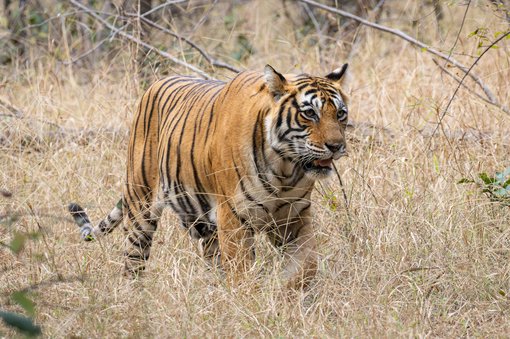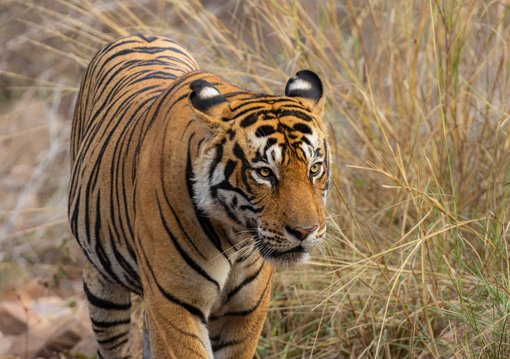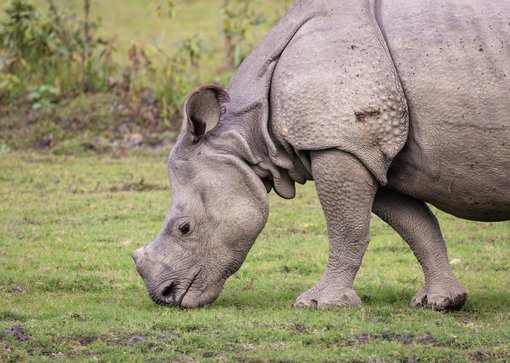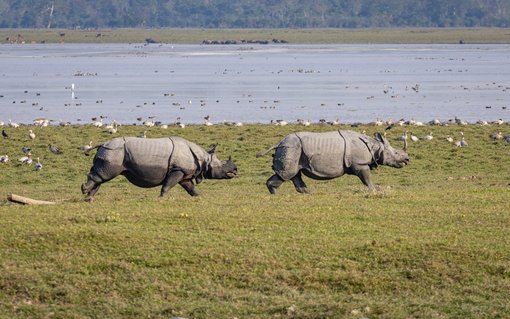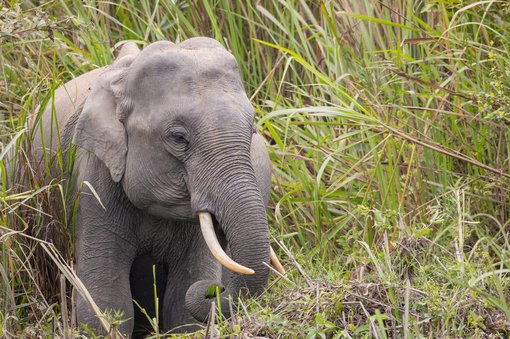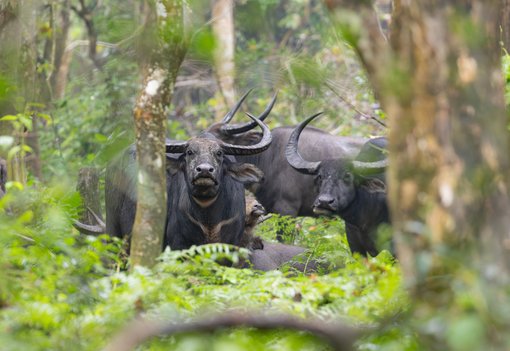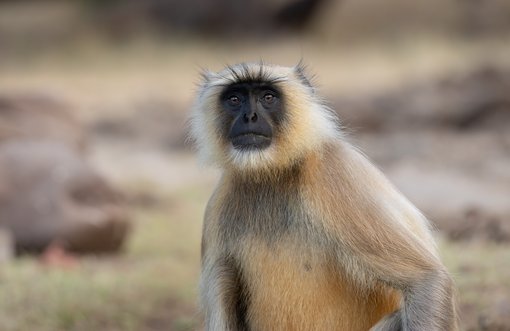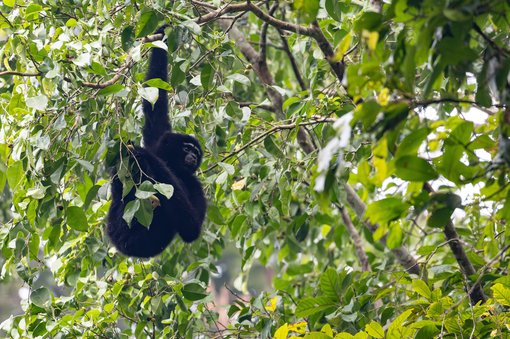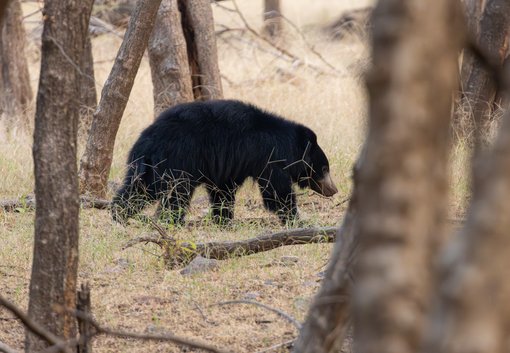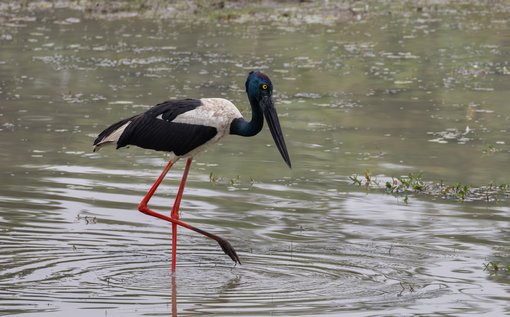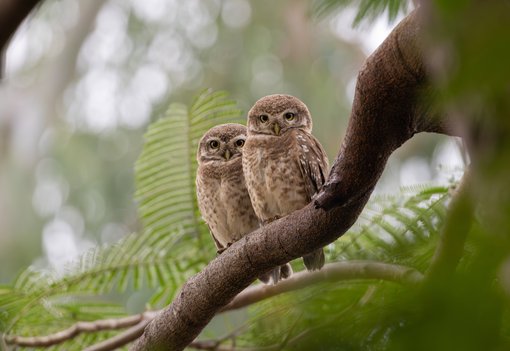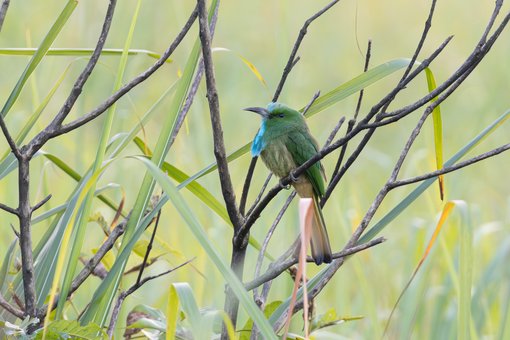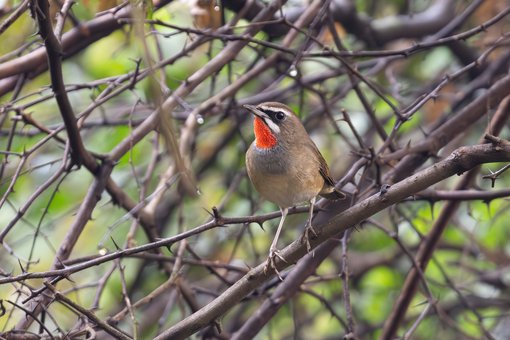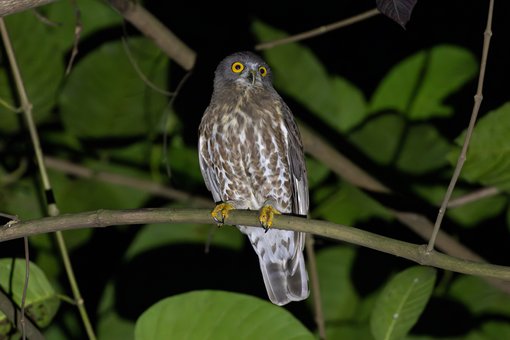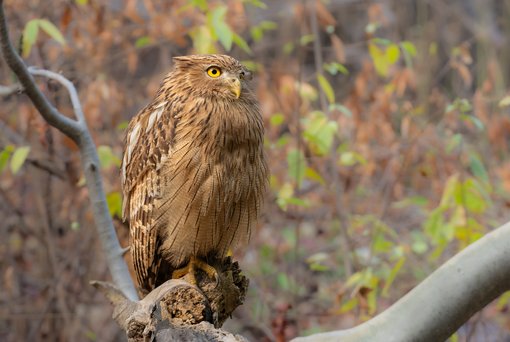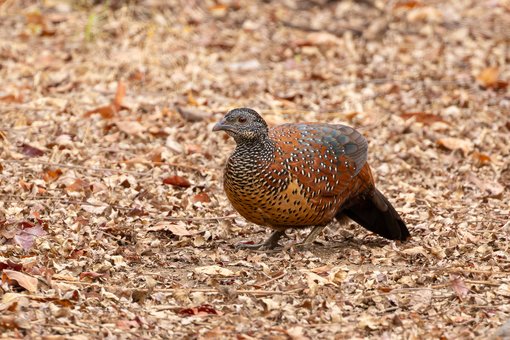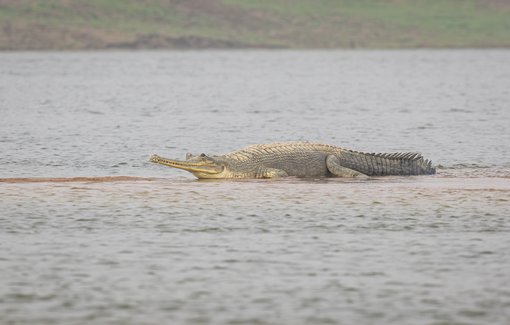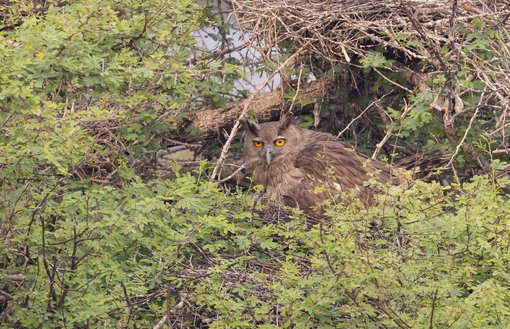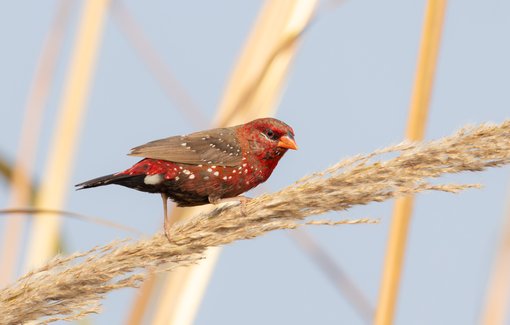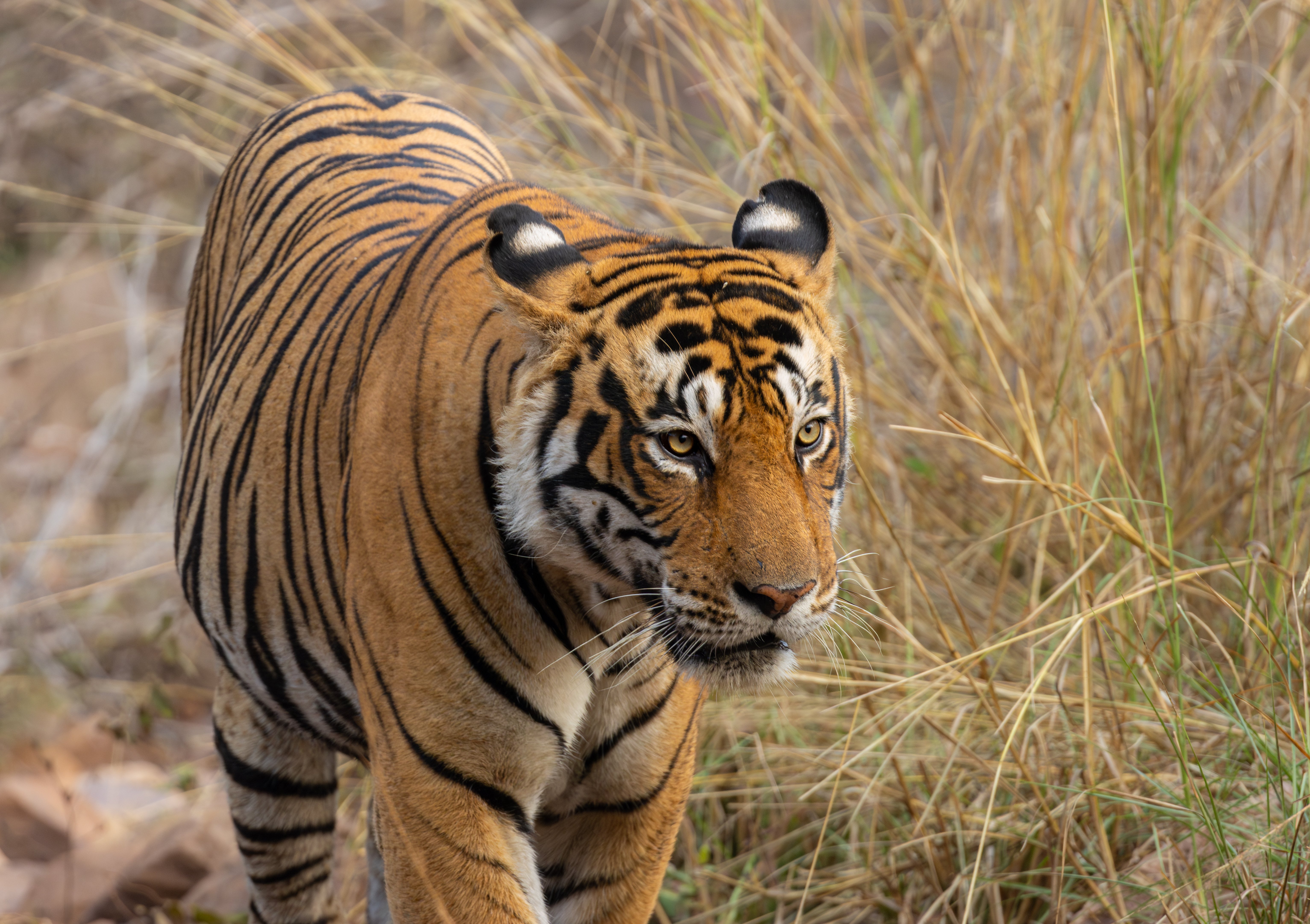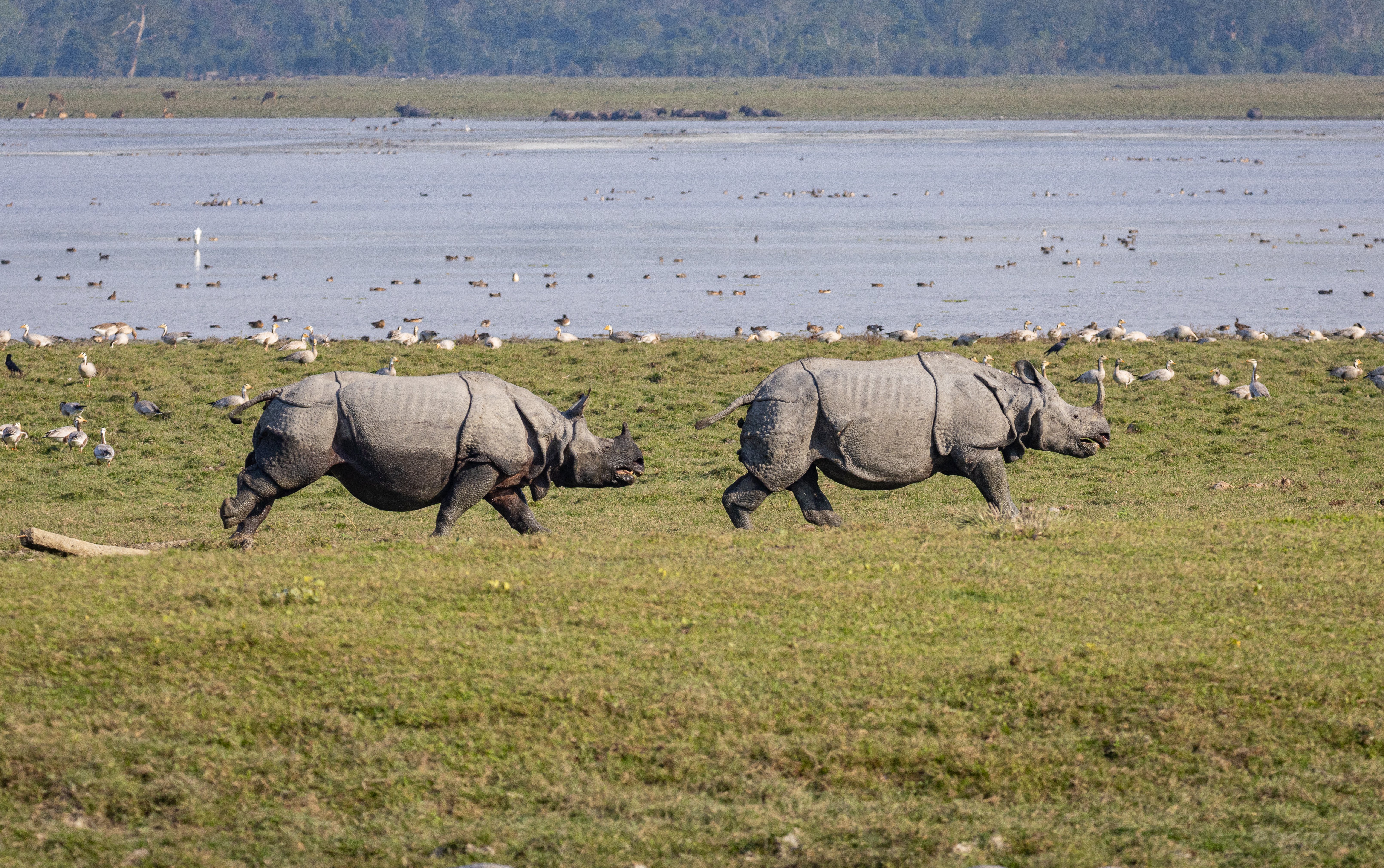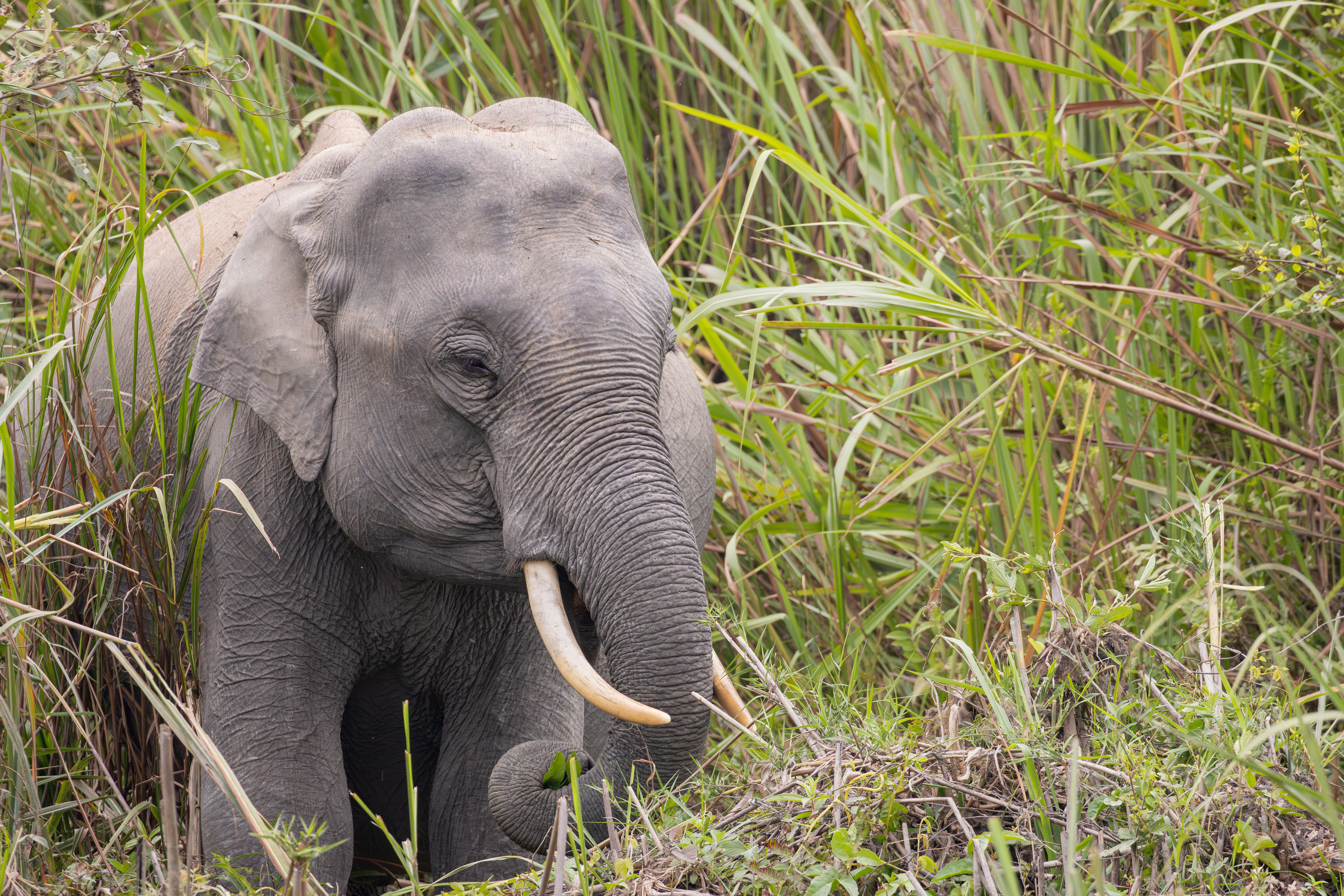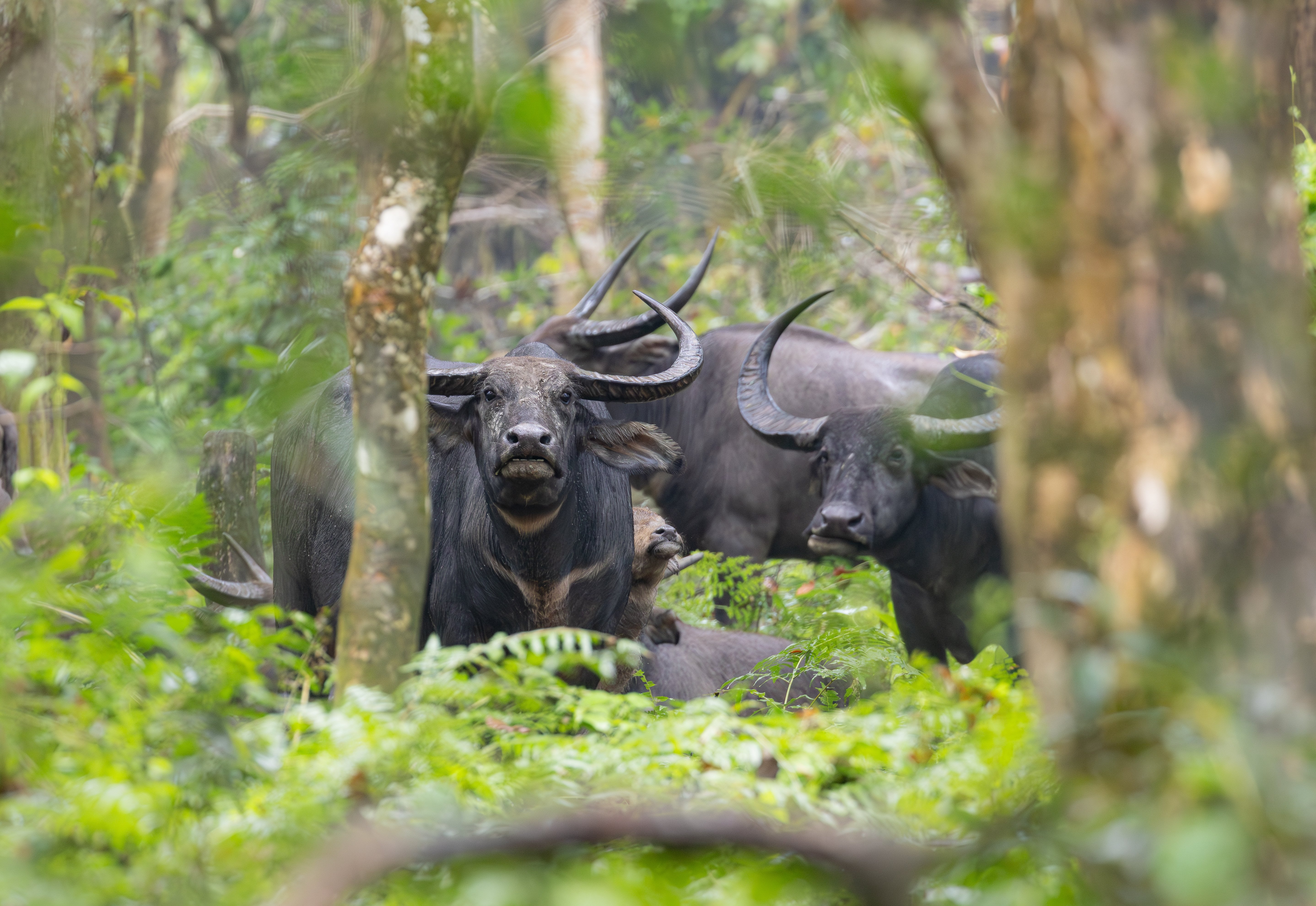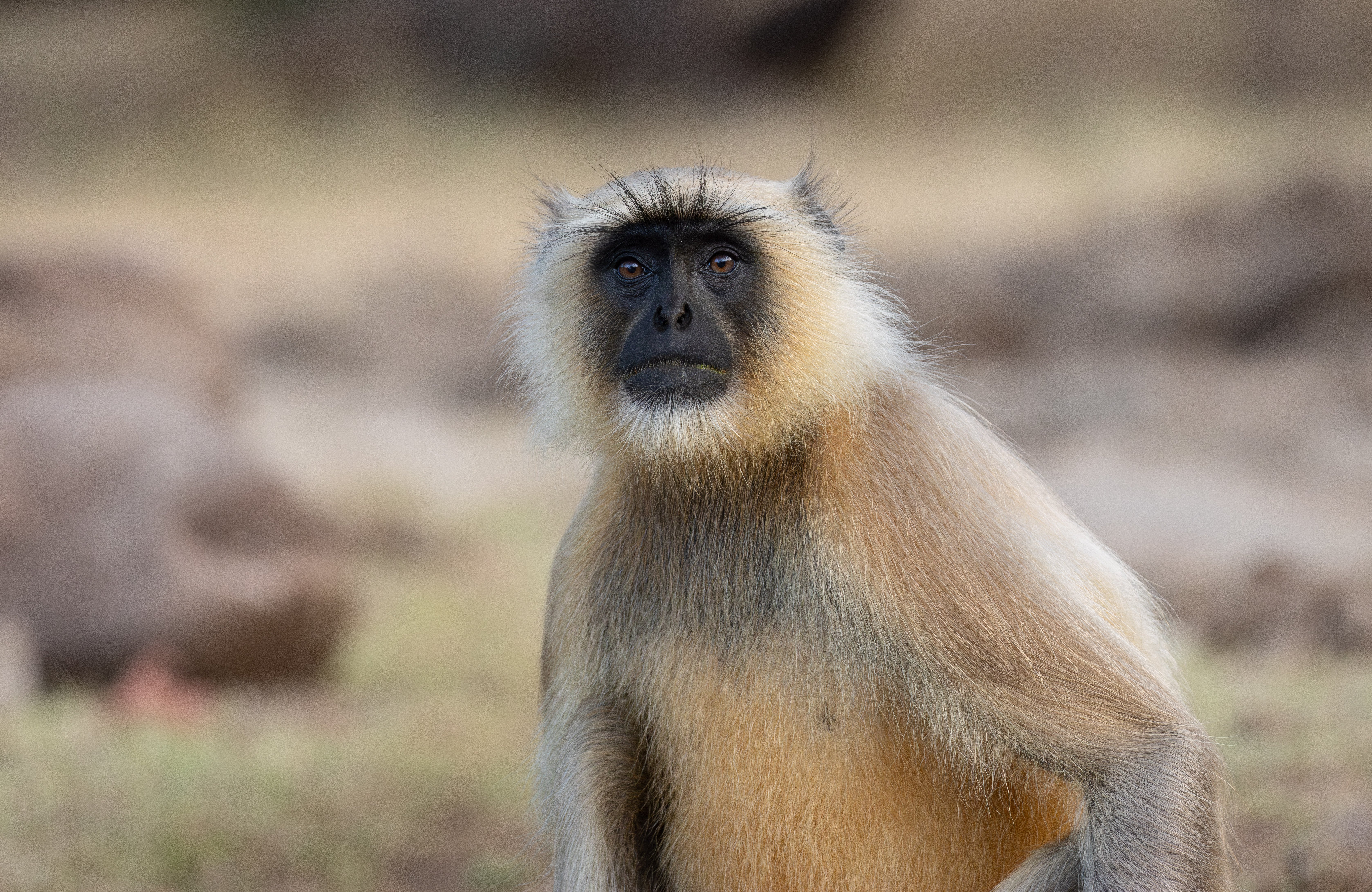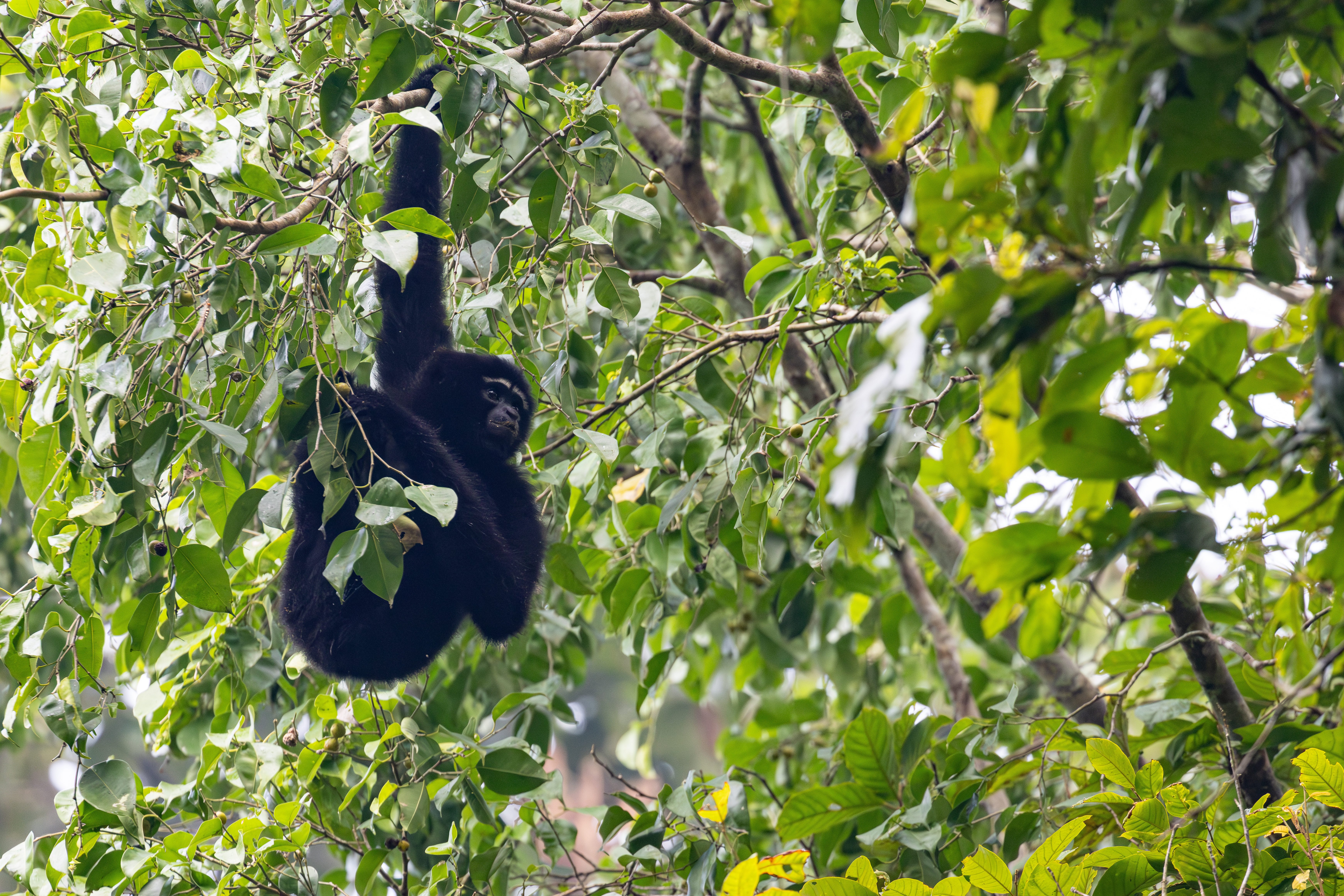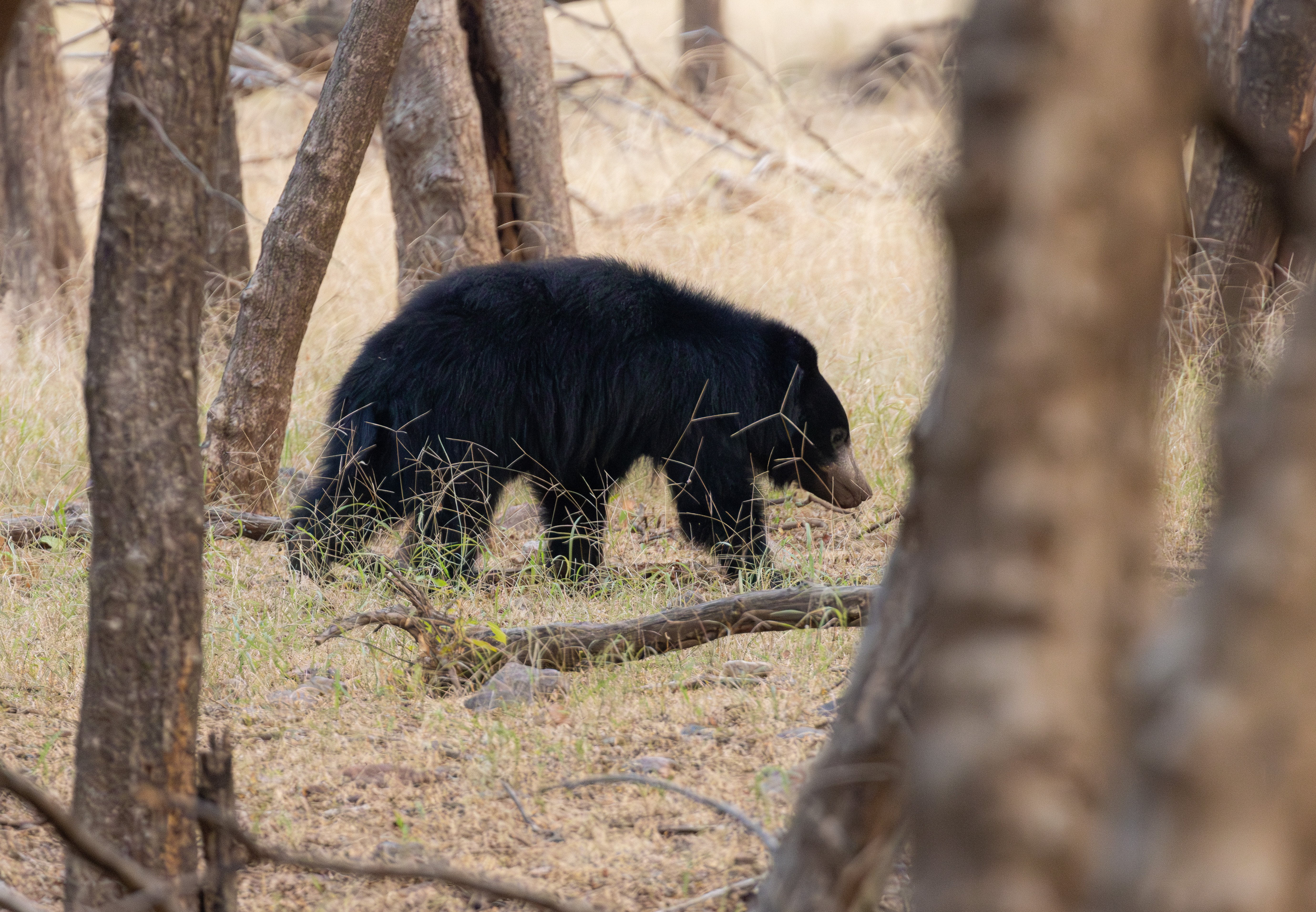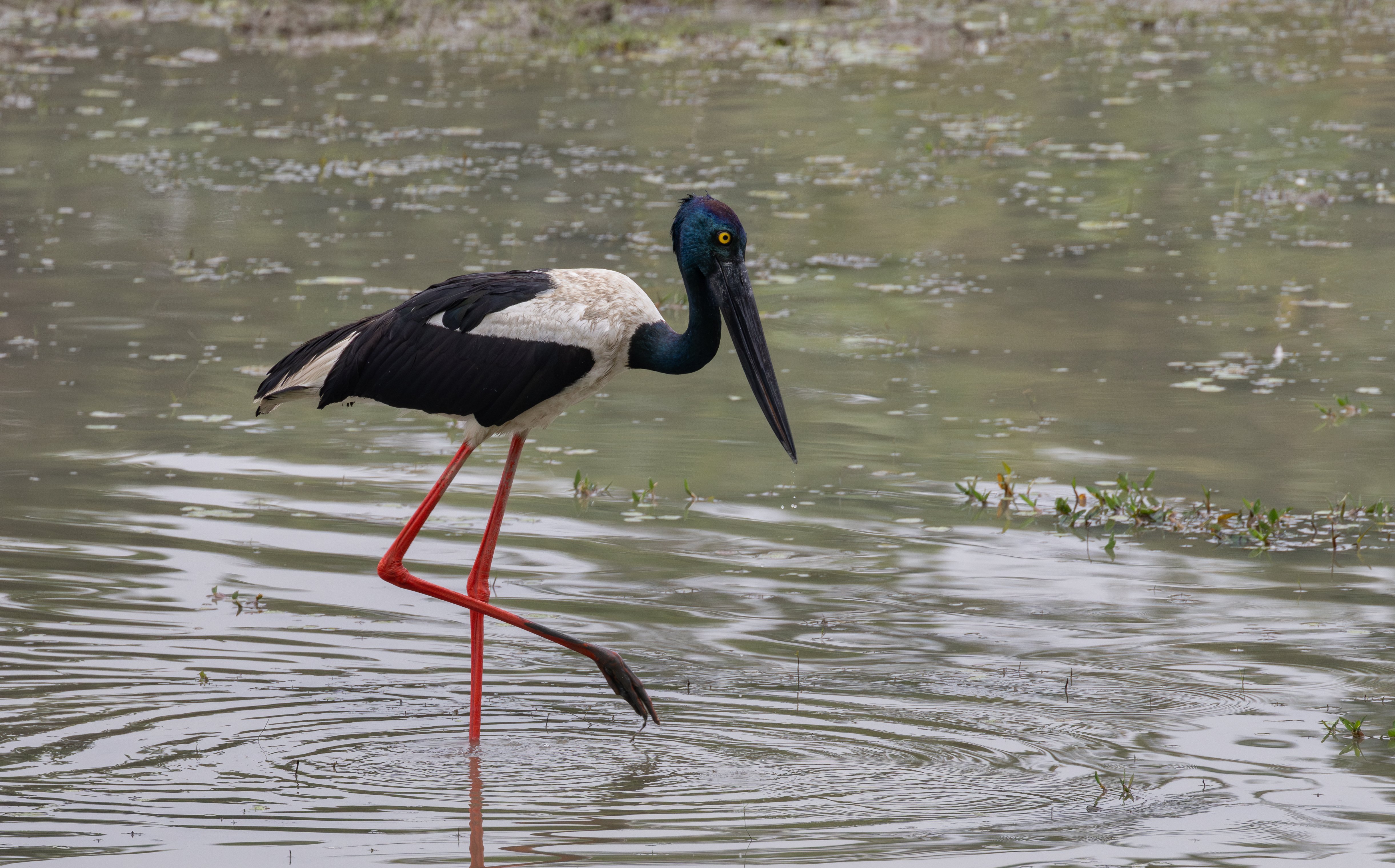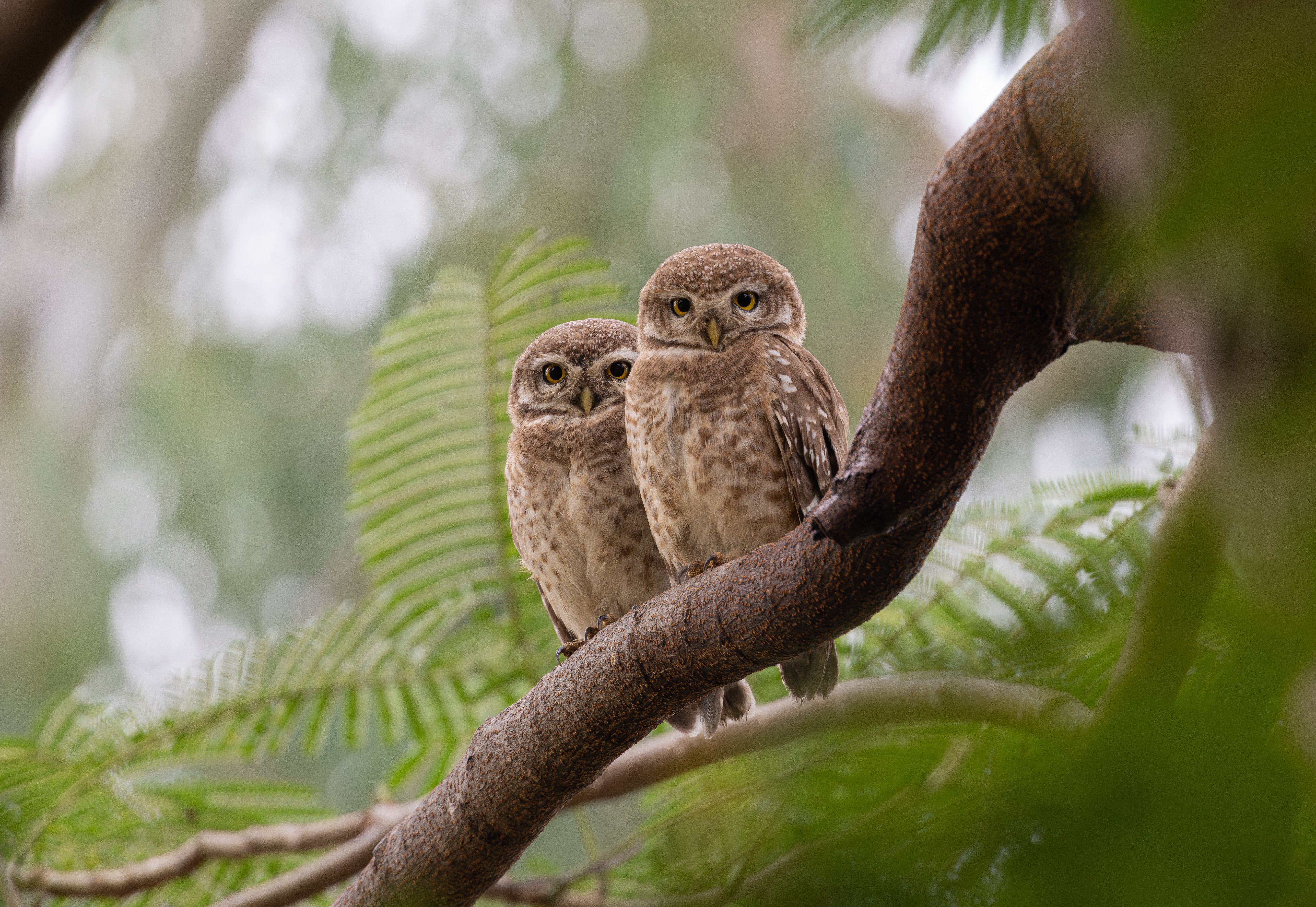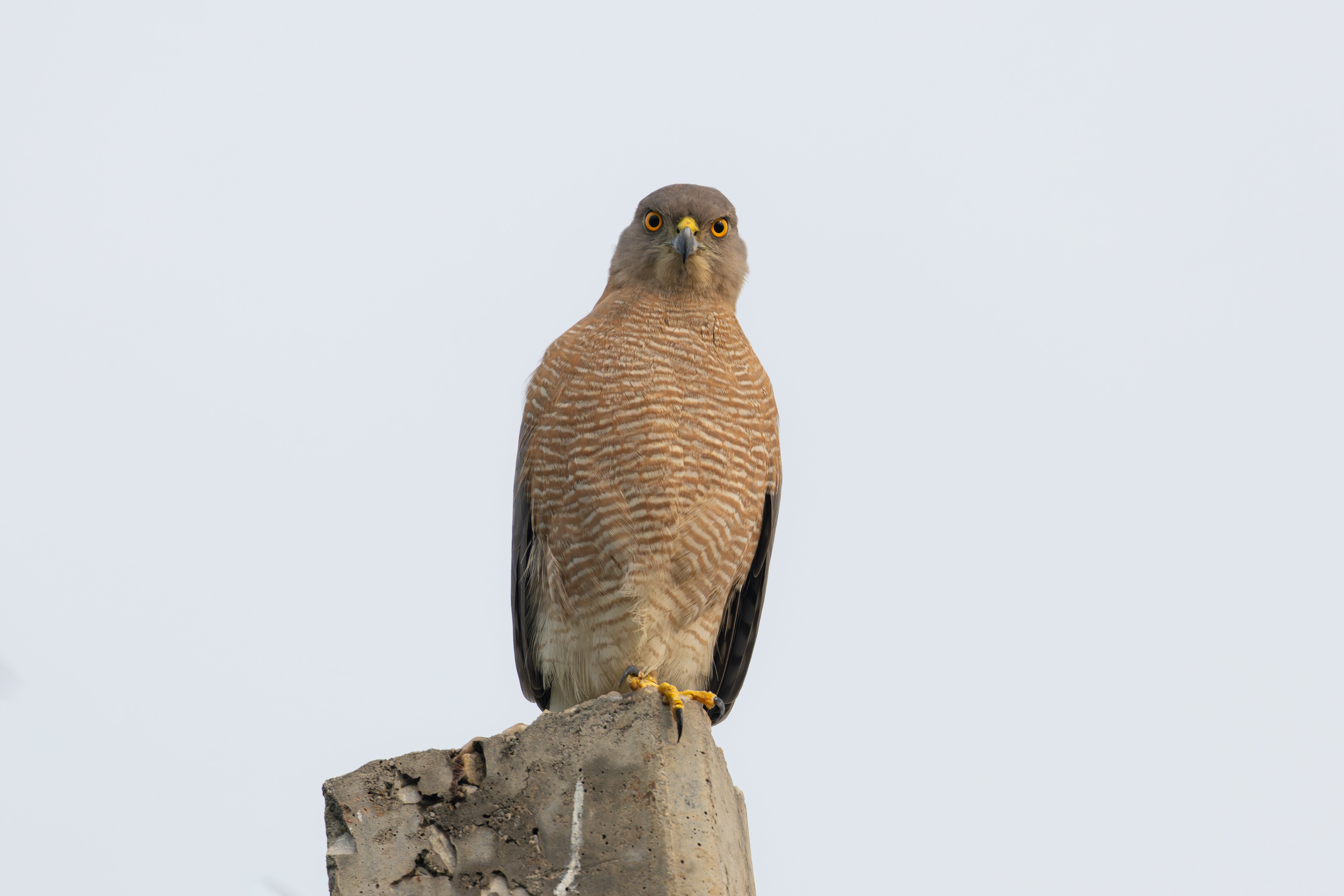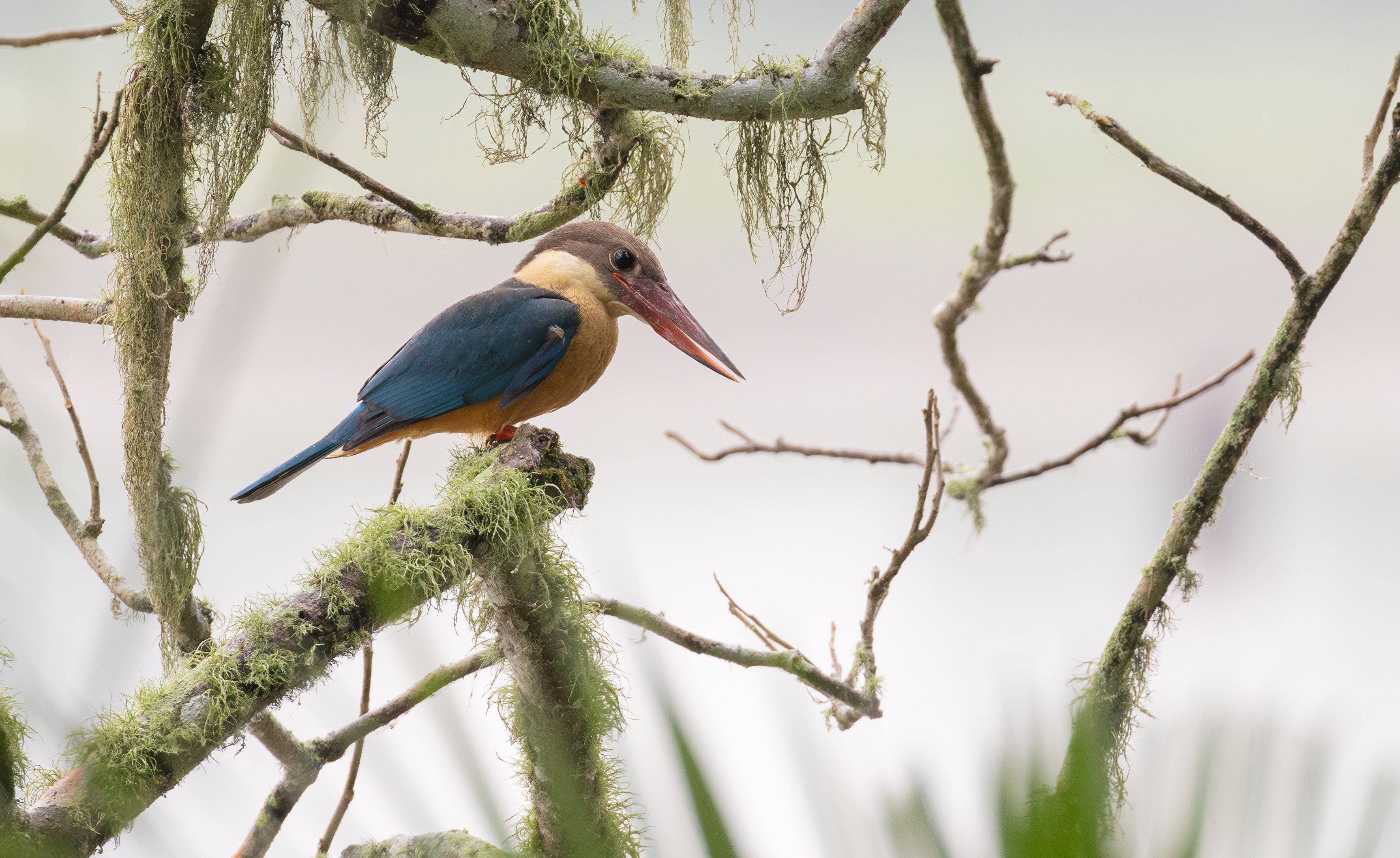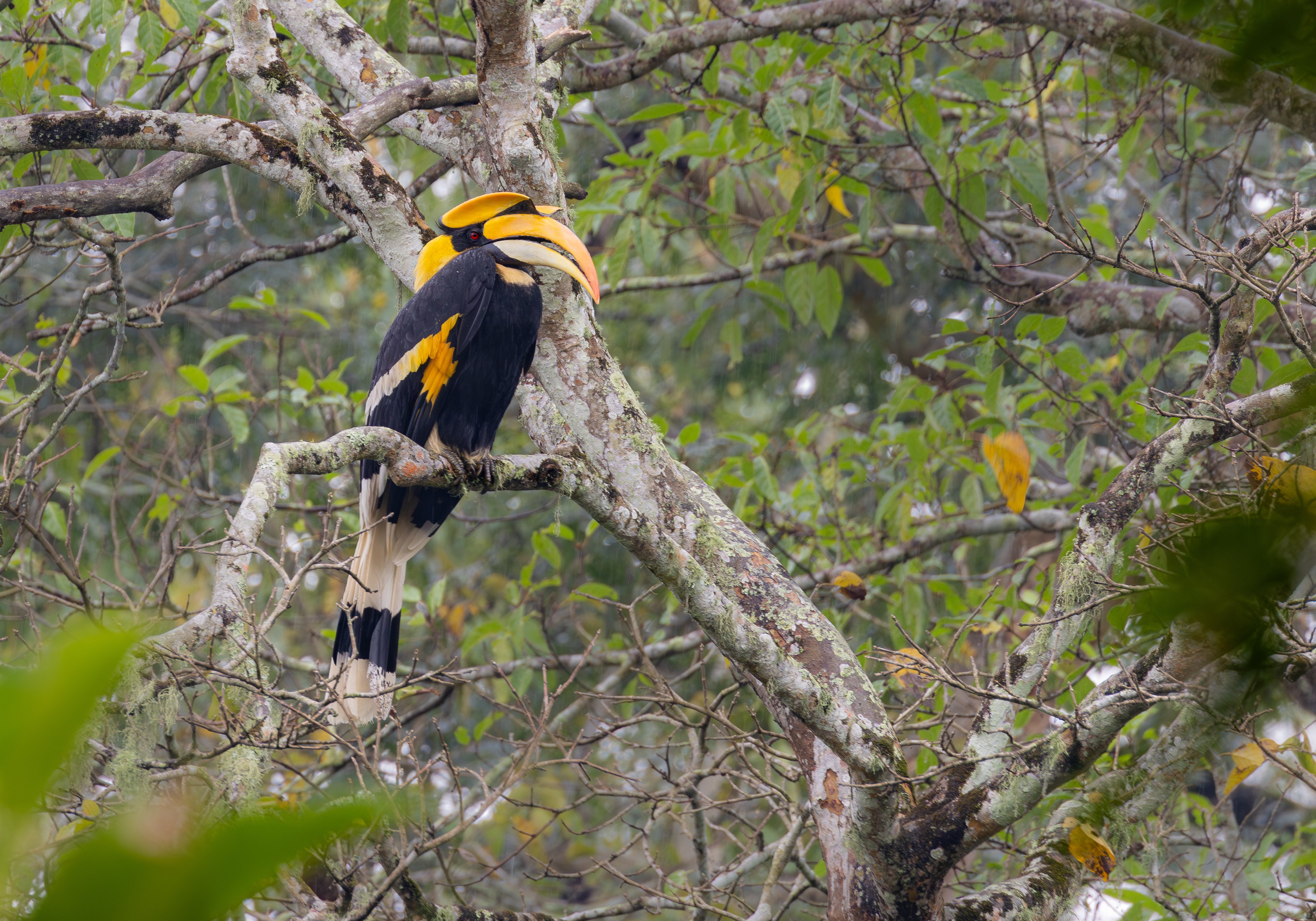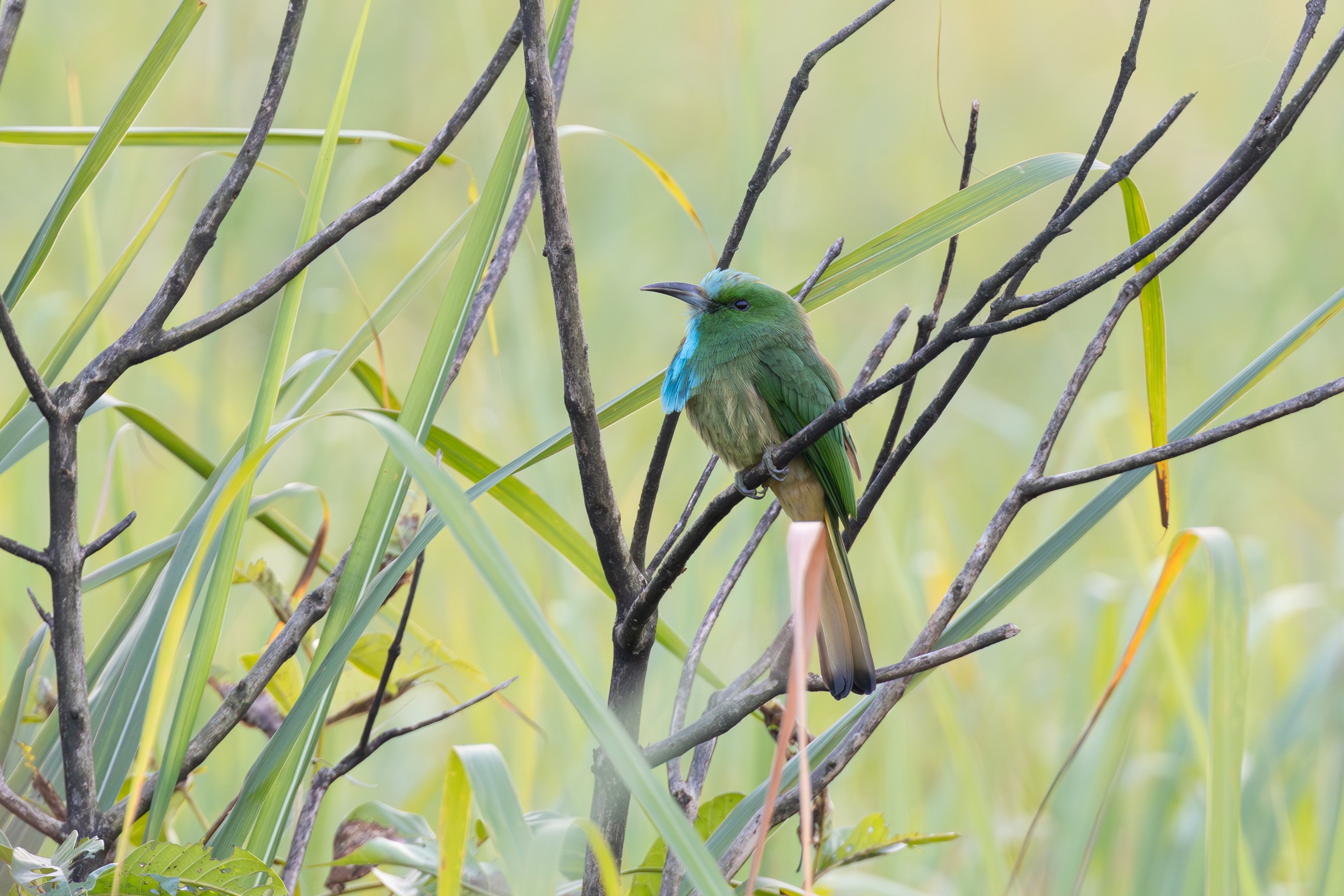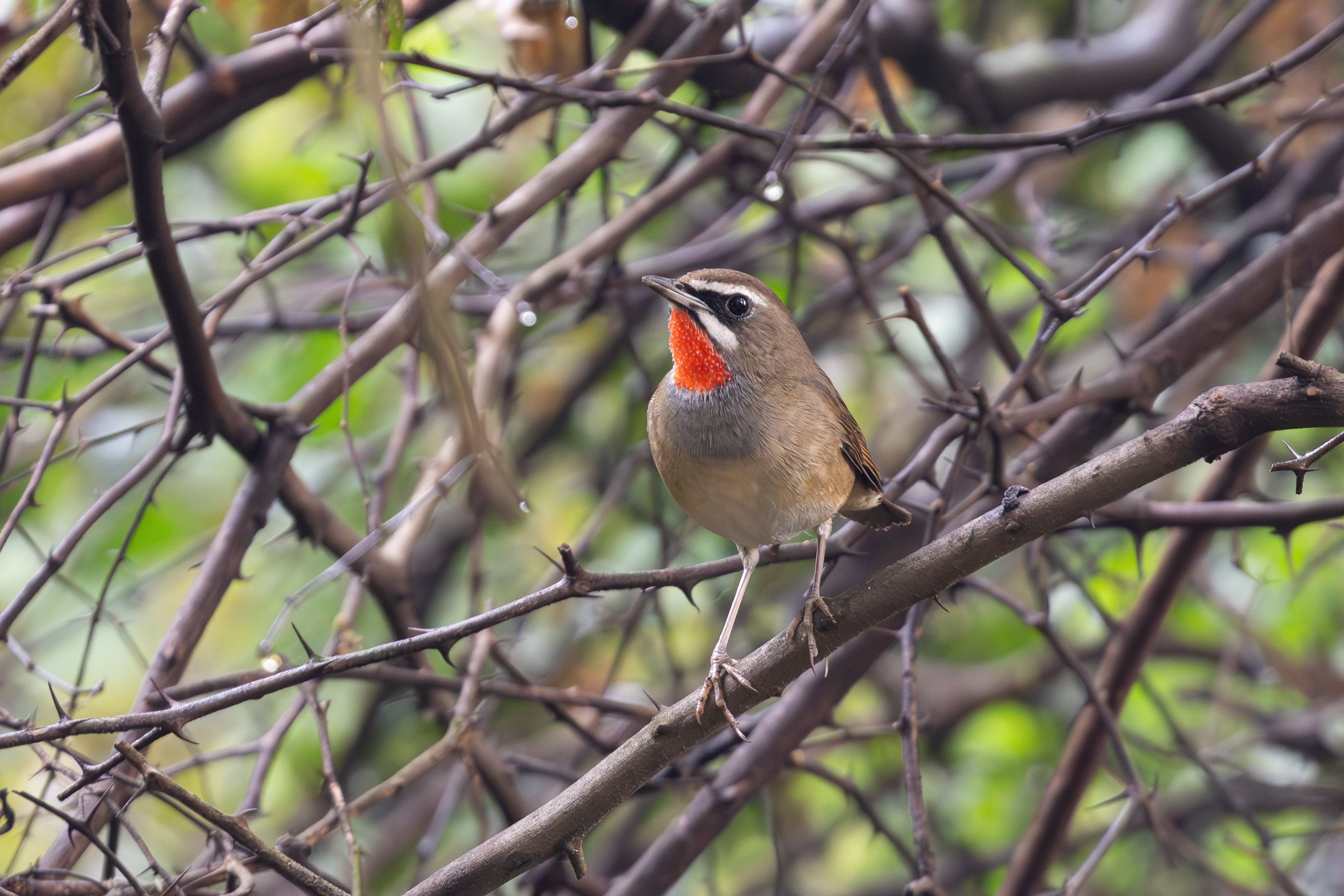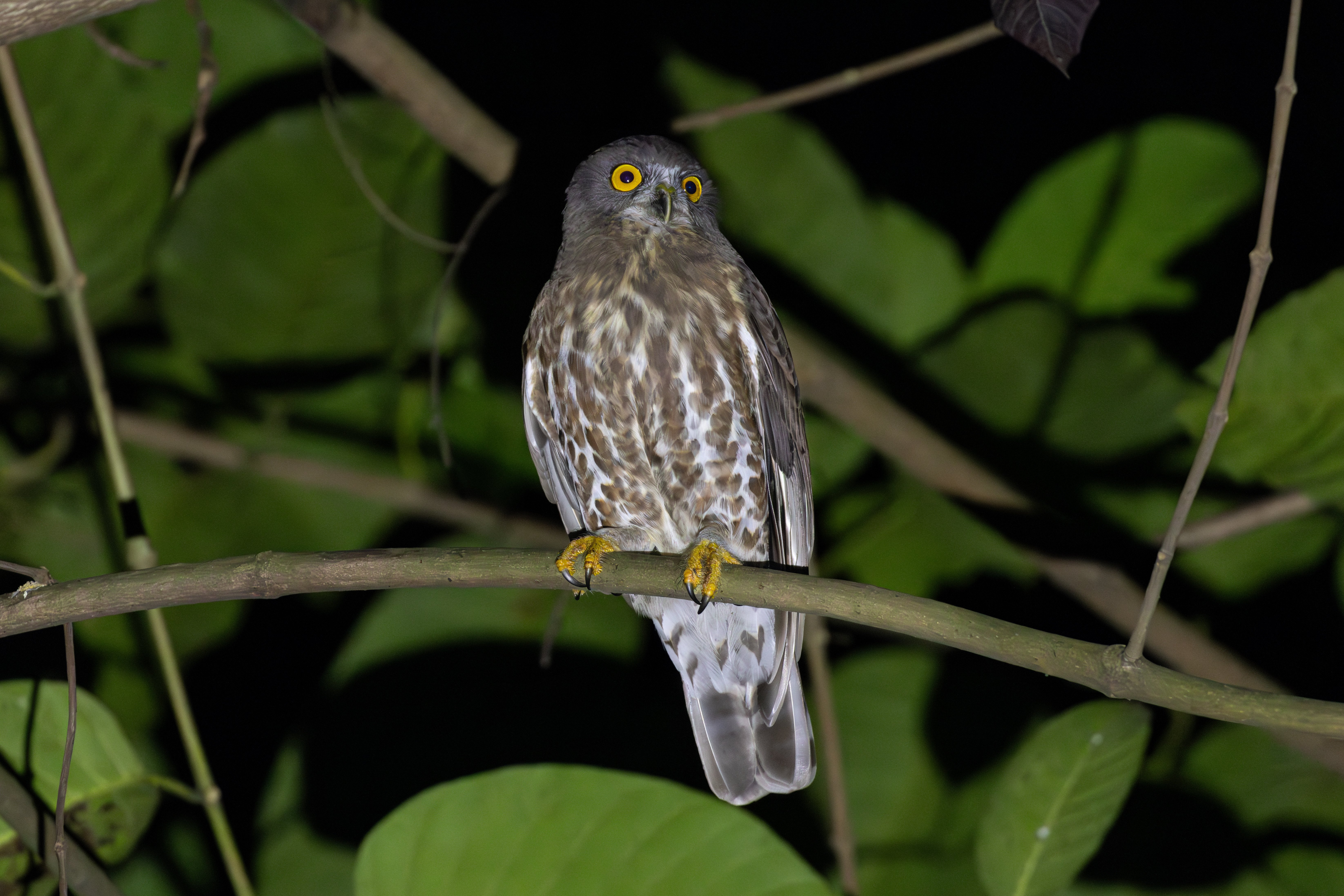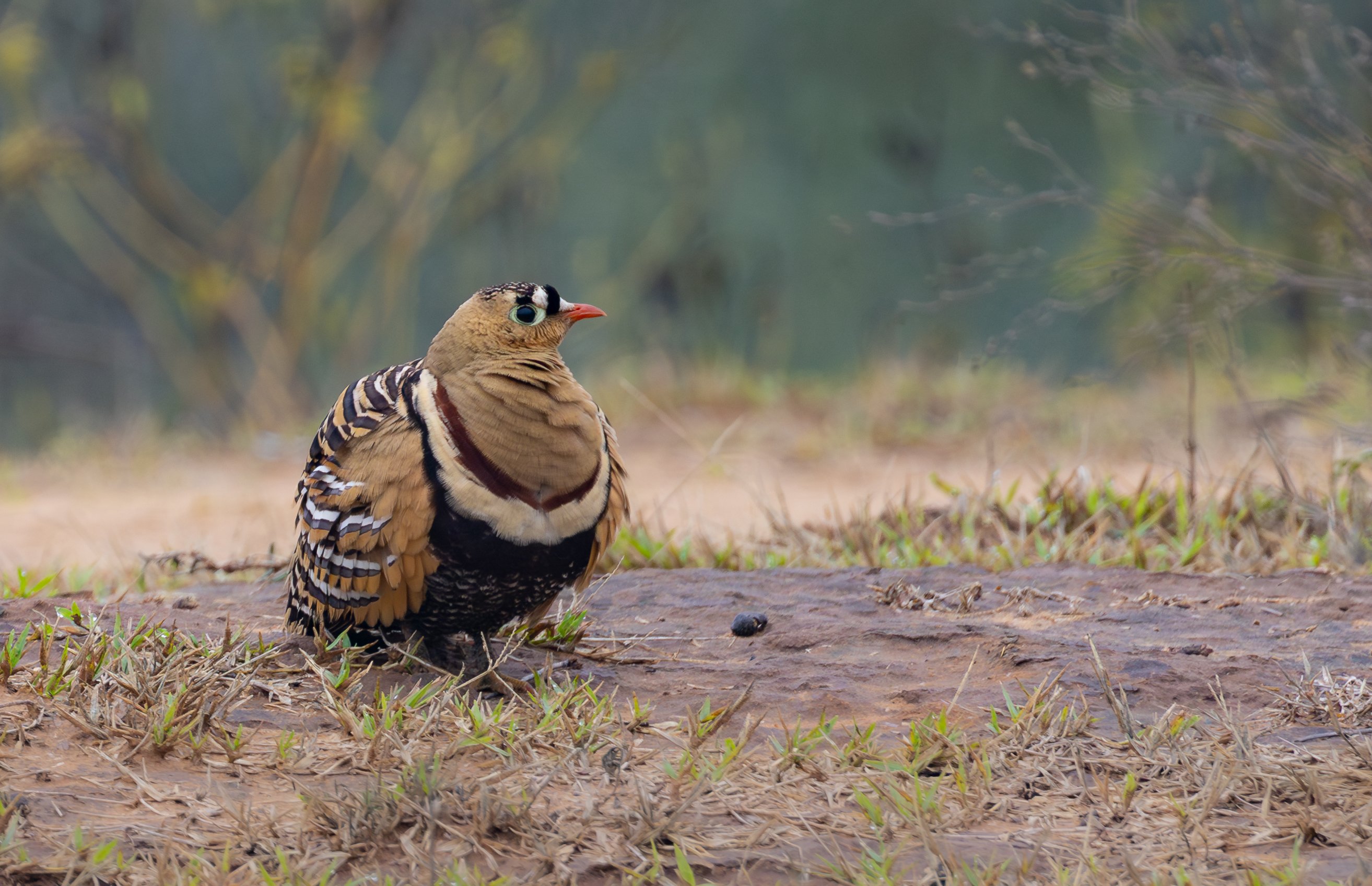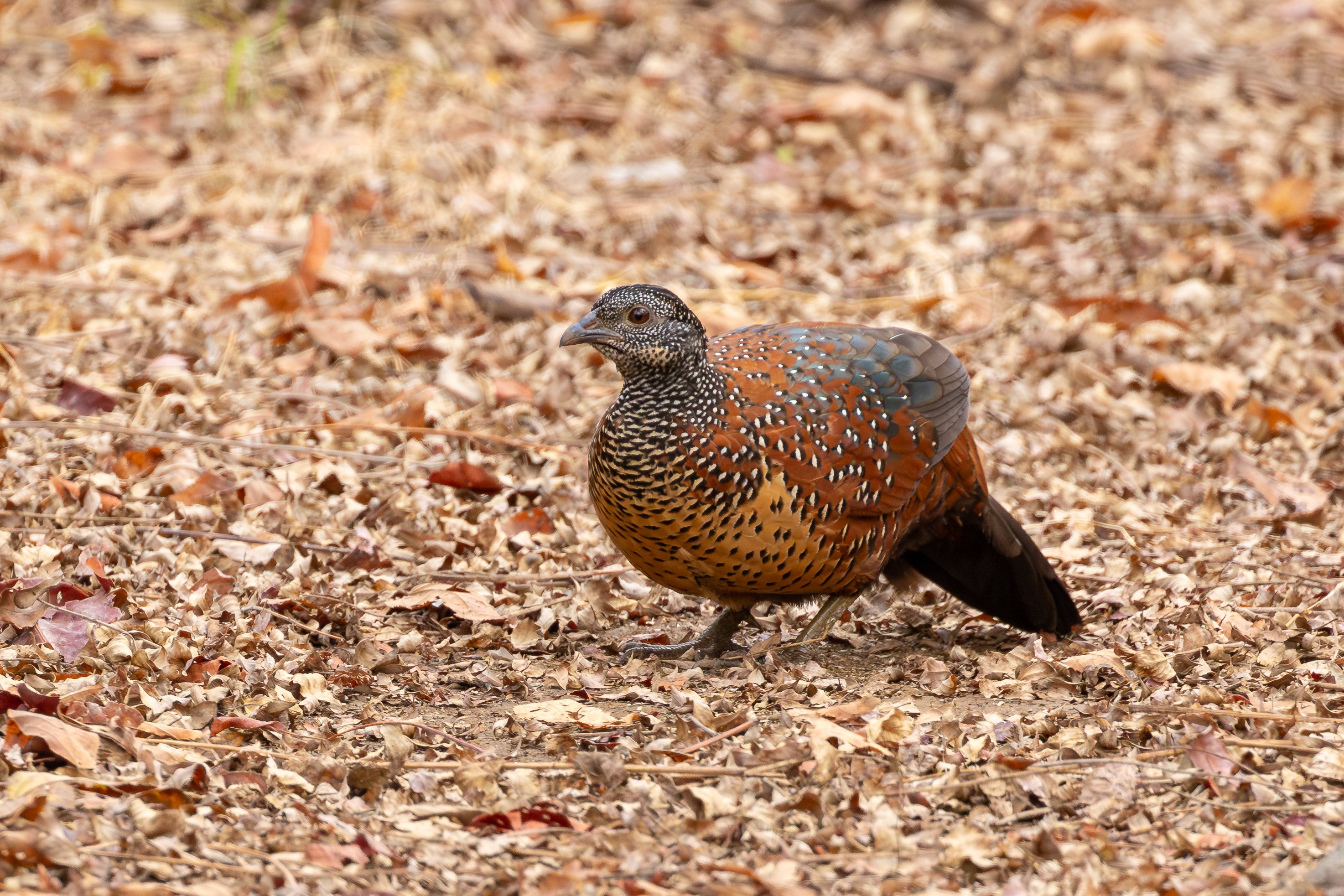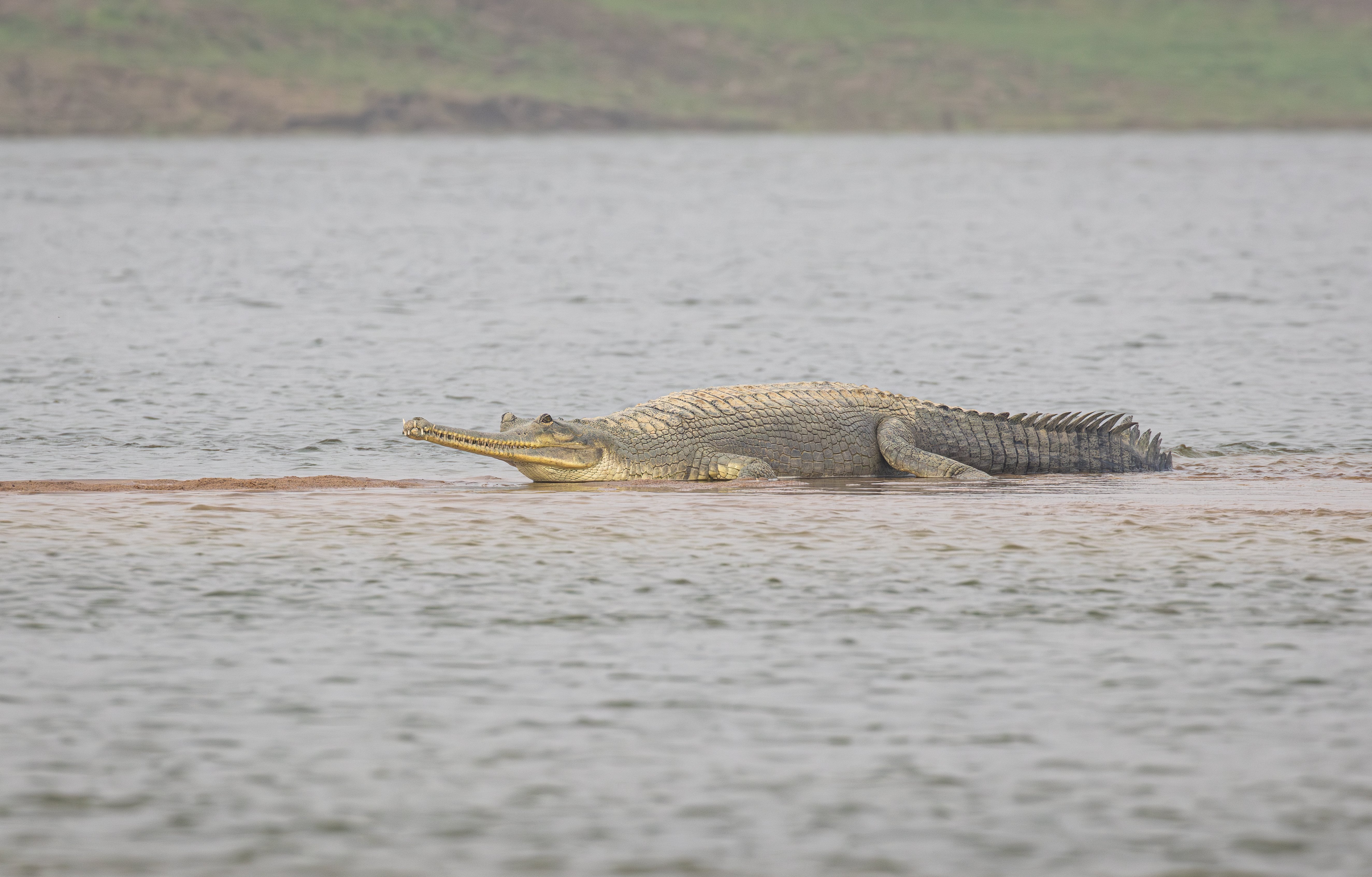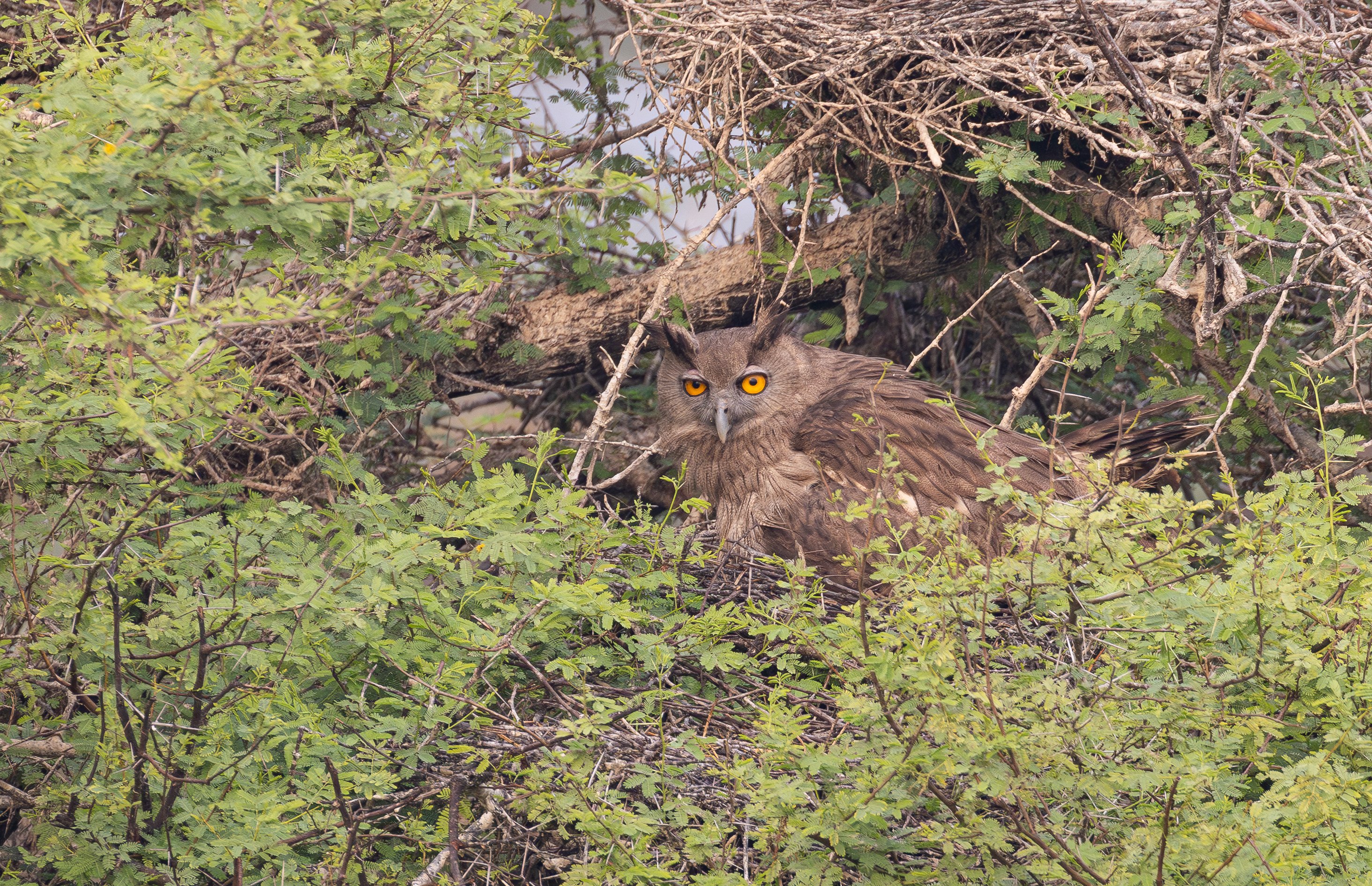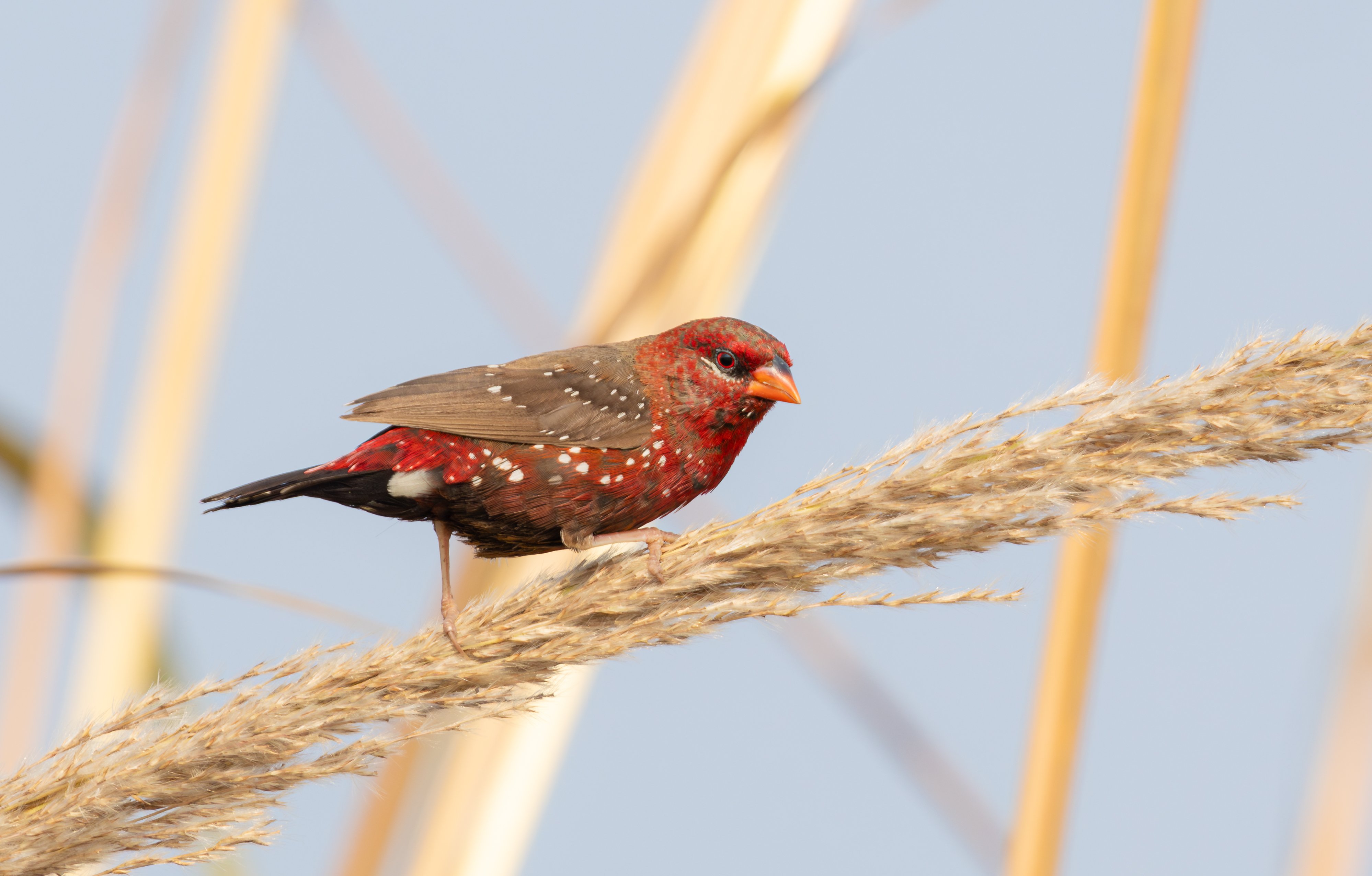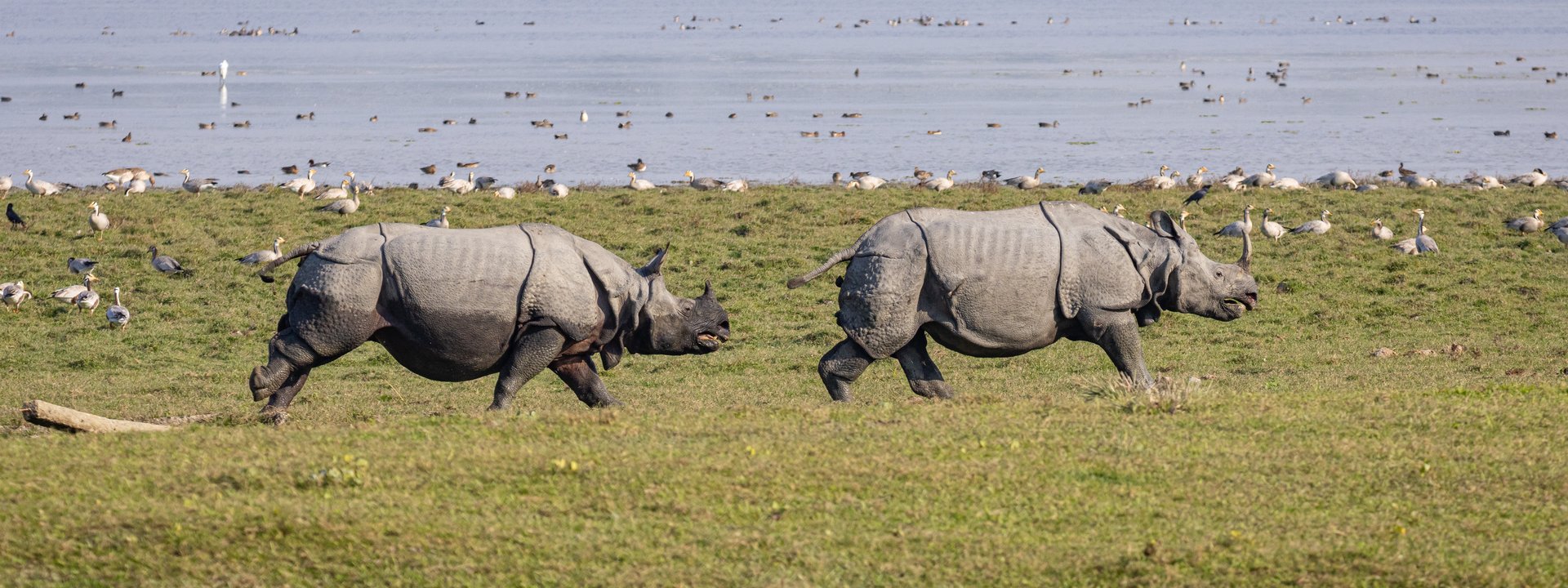India
The Birds and Mammals of Northern India
A 16-day small group tour visiting some of the premier reserves of Northern India.
India is home to some spectacular wildlife and on our all-new tour (which is being run in collaboration of our sister brand WildWings), we will explore some of the nation's most iconic reserves including Bharatpur, Ranthambore and Kaziranga.
Focussing primarily on birds and mammals, we can expect to see an incredible range of species during the holiday with the mammalian possibilities including Bengal Tiger, Leopard, Jungle Cat, Sloth Bear, Golden Jackal, Greater One-horned (or Indian) Rhinoceros, Asian Elephant, Asian Wild Buffalo and South Asian (Ganges) River Dolphin.
The list of birds should be equally impressive and we hope to see around three hundred species including Painted Spurfowl, Kalij Pheasant, Painted Sandgrouse (endemic), Indian Skimmer, Great Stone-curlew, Indian Spotted Eagle, Pallas’s Fish Eagle, Brown Fish Owl, Yellow-footed Green Pigeon, Great Hornbill, Blue-bearded Bee-eater and Red-headed Trogon.
Led by Limosa's Fernando Enrique Navarrete, who undertook a recce of this new and exciting tour in 2023, this promises to be a fantastic fortnight which will be packed with amazing wildlife and great memories.
Tour Dates & Prices
Sat 2nd November 2024
Sun 17th November 2024
- Available
Tour Cost: 16 Days from £4895
What's Included?
- Limosa Tour Leader
- Expert English-speaking Indian bird guide
- 14 nights accommodation in comfortable hotels
- All main meals: tasty Indian cuisine, with drinking water provided throughout
- Transport by air-conditioned small coach
- Boat trip on the Chambal river in search of the critically endangered Gharial (crocodile) and Indian Skimmer
- All excursions, entry fees, permits, tour based tips (local guides, drivers, etc)
Cost Excludes
International flights, insurance, visa costs, drinks, airport meals/snacks and other items of a personal nature
Notes
Despite the end of pandemic restrictions, we have taken the decision to continue to price our holidays as excluding international flights.
To keep the process as simple as possible, we are working very closely with a dedicated agent at Travel Counsellors, Sacha Barbato, who is essentially now our “in house” flight consultant.
Sacha is a highly experienced independent ATOL bonded travel agent, and his contact details are as follows: sacha.barbato@travelcounsellors.com and 01603 360099
He will be able to advise you which flights we are recommending for each holiday and will be able to book these for you.
This will also sometimes give you the option to travel from a regional airport if you prefer.
Tour Highlights
- Explore some of India's most iconic reserves including Bharatpur, Ranthambore and Kaziranga.
- Look for a spectacular range of birds including Painted Spurfowl, Kalij Pheasant, Painted Sandgrouse, Indian Skimmer, Great Stone-curlew, Indian Spotted Eagle, Brown Fish Owl, Great Hornbill, Blue-bearded Bee-eater and Red-headed Trogon.
- Enjoy a fantastic range of large mammals with the possibilities including Bengal Tiger, Leopard, Jungle Cat, Sloth Bear, Greater One-horned Rhinoceros and Asian Elephant.
- Enjoy a boat trip on the Chambal River looking for one of the world's rarest crocodiles, the Gharial, plus the critically endangered Red-crowned Roofed Turtle, as well as South Asian (Ganges) River Dolphin and birds such as Indian Skimmer and Great Stone-curlew.
- Visit the Taj Mahal.
- Stay in comfortable accommodation throughout the holiday.
- Expertly led by Limosa’s Fernando Enrique Navarrete and local expert English-speaking Indian bird guides.
Outline Itinerary
Depart UK for Delhi
Arrive Delhi. Explore the Taj Mahal. Transfer to Bharatpur. Night Bharatpur
Two days exploring the world-renowned Keoladeo National Park which is often known as ‘Bharatpur’. Two further nights Bharatpur
Visit the National Chambal Sanctuary. Night Ranthambore
Three days to explore Ranthambore National Park. Three further nights Ranthambore
Explore Sawai Madhopur, including a visit to Soorwal Lake. Night Delhi
Flight to Guwahati, Assam and transfer to Kaziranga. Night Kaziranga
Three days exploring Kaziranga National and the Hoollongapar Gibbon Sanctuary. Three further nights Kaziranga
Drive to Guwahati and fly to Delhi. Night Delhi
Visit Sultanpur National Park. Second night Delhi
Fly to UK arriving the same day
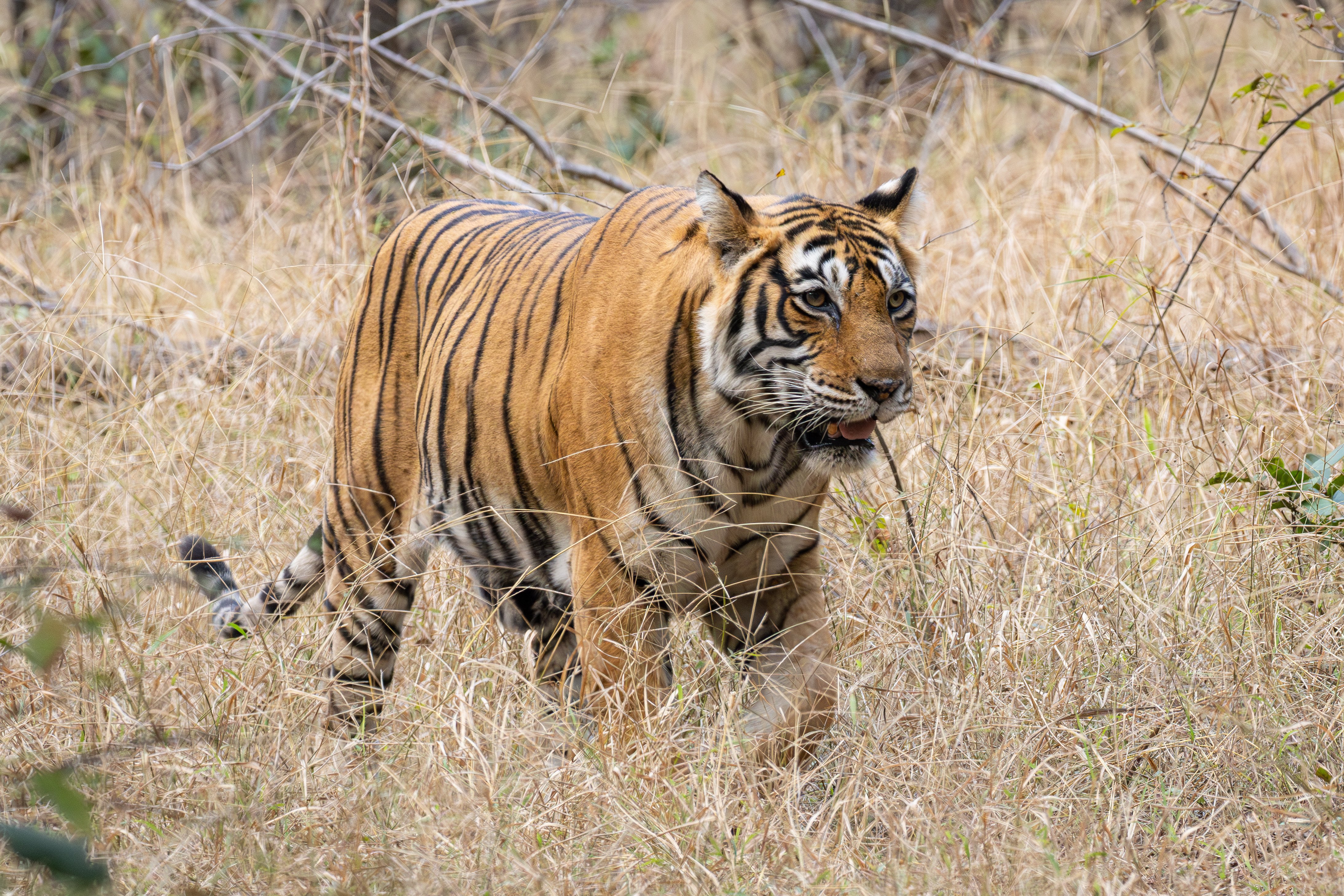
The vast nation of India is home to some truly spectacular wildlife and on our all-new tour, we will visit several of the nation's most iconic reserves providing an opportunity to see an incredible range of birds, mammals and other wildlife.
After looking for birds in the grounds of one of the world's most famous mausoleums, the Taj Mahal, we have two full days to explore the famous reserve at Bharatpur. Now known as the Keoladeo National Park, this former duck-hunting preserve is actively managed for wildlife and we stand a good chance of seeing over one hundred species per day during our stay with the possibilities including Bar-headed Goose, Pheasant-tailed Jacana, Black-necked Stork, Painted Stork, Indian Spotted Eagle, Crested Serpent Eagle, Dusky Eagle-owl, Jungle Nightjar, Indian Golden Oriole, Bay-backed Shrike, Grey-headed Canary-flycatcher, Brahminy Starling and Siberian Rubythroat.
We will then visit the National Chambal Sanctuary to look for the critically endangered Gharial, an extremely rare crocodile which is believed to now number only seven hundred or so individuals in the wild. Other possibilities here include South Asian (Ganges) River Dolphin, Jungle Cat, Golden Jackal and the critically endangered Red-crowned Roofed Turtle, however, there are also a nice range of birds including Indian Skimmer, Great Stone-curlew, Laggar Falcon and White-browed Wagtail.
Our next destination is Ranthambore National Park which is home to one of the highest diversities of mammals in the country and here our main goal is the magnificent Bengal Tiger. Other mammals we could see include Leopard, Sloth Bear, Deccan Chinkara (or Indian Gazelle), Bengal Sacred Langur and Indian Fox.
The reserve is also fantastic for birds with two of our targets being the stunning Painted Spurfowl and endemic Painted Sandgrouse. The critically endangered Red-headed Vulture is another possibility, along with other birds such as Indian Peafowl, Brown Fish Owl, Yellow-footed Green Pigeon, Stork-billed Kingfisher, Plum-headed Parakeet and Yellow-throated Sparrow.
We will then head east to Assam for what may well be the highlight of our holiday, a visit to Kaziranga National Park. This is unquestionably one of the best places in Asia for large mammals, with one of the main attractions being the Greater One-horned (or Indian) Rhinoceros.
The park is also home to a thousand Asian Elephants (the world’s second largest population), over one hundred Tigers plus being a haven for birds with a list of 500 species.
With three full days in the area, our private safaris will allow us to look for an incredible range of birds including Kalij Pheasant, Falcated Duck, Pin-tailed Green Pigeon, Black-necked Stork, Spot-billed Pelican, Pallas’s Fish Eagle, Slender-billed Vulture, Great Hornbill, Blue-bearded Bee-eater, Red-headed Trogon, Greater Flameback and Ruby-cheeked Sunbird, as well as a variety of new mammals such as the endangered Western Hoolock Gibbon, Asian Wild Buffalo and Barasingha (or Indian Swamp Deer).
Leaving Assam, we will return to Delhi where our final full day of the trip will be spent at Sultanpur National Park, a small reserve located 40km west of Delhi. Over 300 species have seen in the extensive marshes, acacia forest and dry open fields of this protected area and two of our targets are the localised Sind Sparrow and Brook’s Leaf Warbler, which we are unlikely to have seen elsewhere. With a supporting cast which could include Sarus Crane, Yellow-wattled Lapwing, Painted Stork, Red-naped Ibis, Greater Spotted Eagle, Spotted Owlet, Indian Bush Lark, Scaly-breasted Munia and Rosy Starling, it promises to be an enjoyable and bird-rich end to our time in Northern India.
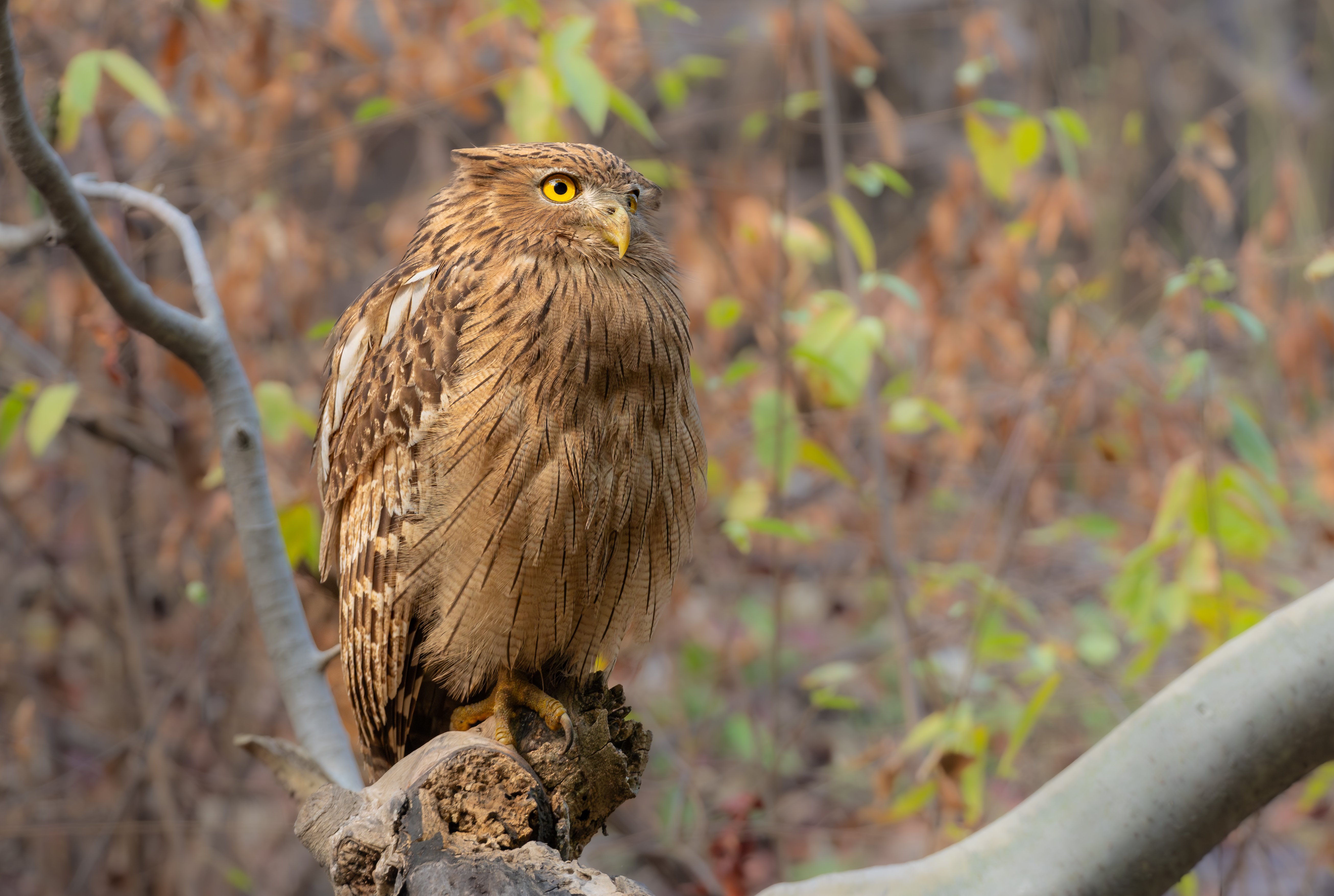
Days 1-2
Our tour starts with a flight to New Delhi, where our driver and local guide will be waiting to meet us. We will drive south for approximately three hours for a visit to what is undoubtedly one of the most famous buildings in the world, the emblematic Taj Mahal. This ivory-white marble mausoleum was commissioned in 1631 by the Emperor Shah Jahan in honour of his wife, Mumtaz Mahal.
This UNESCO World Heritage Site is one of the Seven Wonders of the Modern World and is home to a surprisingly diverse avifauna. As we explore around the well-kept gardens and along the banks of the Yamuna River, we should find birds such as Ruddy Shelduck, Brown-headed Gull, Indian Cormorant, Egyptian Vulture, Black Kite, Indian Grey Hornbill, Jungle Babbler and Indian Pied Myna.
We will then continue on to our destination for the next few days, the picturesque town of Bharatpur and if we have enough time, we will spend the last hours of the day birding around some nearby fields. Night Bharatpur
Days 3-4
We have two full days to visit the world-renowned Keoladeo National Park which is often known simply as ‘Bharatpur’. Established in 1982, this former duck-hunting reserve is one of the most important wetlands in India and a vital stopover and wintering site for Palearctic migrants.
Nearly 400 species have been recorded inside the 29sq kms of the park, which has a well-designed system of dykes and sluices that provide areas of varying water depths.
We will use electric rickshaws to visit a wide variety of different habitats where it is not unusual to see over 100 species of birds in a day.
There are an astonishing number of aquatic birds with the likes of Lesser Whistling Duck, Bar-headed Goose, Indian Spot-billed Duck, Red-crested Pochard, Ferruginous Duck, Bronze-winged Jacana, Pheasant-tailed Jacana, Asian Openbill, Black-necked Stork, Painted Stork, Oriental Darter and Black Bittern amongst the species we hope to see.
A fantastic selection of raptors can also be found here including dozens of Greater Spotted Eagles, Indian Spotted Eagle, Eastern Imperial Eagle, Crested Serpent Eagle, Tawny Eagle, Crested Honey Buzzard and Shikra.
Our local guide often knows stakeouts for some of the most iconic nocturnal birds of the park and those we could find include Dusky Eagle-owl, Spotted Owlet, Indian Scops Owl and Jungle Nightjar.
If the wetlands are not enough, the forested areas and the dry scrub near the entrance are absolutely teeming with birds, with Indian Golden Oriole, Bay-backed Shrike, Grey-headed Canary-flycatcher, Ashy Prinia, Streak-throated Swallow, Hume’s Leaf Warbler, Greenish Warbler, Indian White-eye, Brahminy Starling, Orange-headed Thrush, Indian Robin, Oriental Magpie-robin, Indian Silverbill and the spectacular Siberian Rubythroat amongst the possibilities. Two further nights Bharatpur
Day 5
We plan to make an early start to reach our destination, the National Chambal Sanctuary, which encompasses a 400km stretch of the Chambal River.
This reserve was created to protect the most important population of Gharial in the world. With less than seven hundred individuals left in the wild, this critically endangered crocodile shares its habitat with other emblematic and localised species such as the South Asian (Ganges) River Dolphin, the critically endangered Red-crowned Roofed Turtle (along with seven other species of turtles) and the Marsh Crocodile.
A boat will be waiting to take us upstream in search of all these magnificent creatures, plus a nice array of birds. One of our main targets is the rare Indian Skimmer, and the Chambal is one of the most reliable places to see it.
Other birds that we could encounter during our boat safari are the endangered Black-bellied Tern, River Tern, Bar-headed Goose, Grey Francolin, Great Stone-curlew, River Lapwing, Pallas’s Gull, Bonelli’s Eagle, Long-legged Buzzard, Laggar Falcon, Grey-throated Martin and the beautiful White-browed Wagtail.
After our boat trip, we have an hour or two to explore some of the ravines and deciduous forest along the riverbank where we may find Sirkeer Malkoha, Yellow-eyed Babbler, Brahminy Starling, Red-breasted Flycatcher and Paddyfield Pipit as well as Jungle Cat, Golden Jackal, Indian Fox, Rhesus Macaque and Nilgai.
After a rich morning of wildlife watching, we will drive on to our lovely hotel which is right outside the famous Ranthambore National Park. Night Ranthambore
Days 6-8
Previously a hunting ground for the Maharajas of Jaipur, the world famous Ranthambore National Park is now one of India's flagship reserves.
With 1,334 sq km of tropical deciduous forests, cliffs and lakes, the park is home to one of the highest diversities of mammals in the country. Our main target is the magnificent Bengal Tiger, but many other species can be surprisingly easy to see inside the borders of the reserve including Leopard, Sloth Bear, Chital, Sambar, Deccan Chinkara, Wild Boar, Nilgai, Bengal Sacred Langur, Ruddy Mongoose and Indian Fox.
Every morning, after a quick coffee and biscuits, our private jeeps will pick us up at the hotel and we will spend the next 3-4 hours exploring one of the ten designated zones into which the core area of the park is divided.
Although the density of game and our search for Tigers will keep us busy, the diversity of birds is another major attraction. The stunning Painted Spurfowl, the ubiquitous Indian Peafowl, Yellow-footed Green Pigeon, Asian Woolly-necked Stork, Stork-billed Kingfisher, Coppersmith Barbet, Plum-headed and Alexandrine Parakeets, Small Minivet, White-browed Fantail and Yellow-throated Sparrow are just a handful of the species which can often be easily observed along our route.
Each morning safari is followed by a tasty breakfast and any spare time can be used to explore the acacia forest and small wetland in front of our hotel. This is one of the best places to see the endemic Painted Sandgrouse, plus a nice selection of other birds such as Grey Francolin, Red-wattled Lapwing, Marsh Sandpiper, Black-winged Kite, Bay-backed Shrike, Long-tailed Shrike, Ashy-crowned Sparrow-lark, Rufous-fronted Prinia and Siberian Stonechat.
After lunch, we will repeat the process, arriving at the park during the warmest part of the day which can be really good for raptors, including the critically endangered Indian and Red-headed Vultures, Crested Serpent Eagle, Short-toed Snake Eagle, Black Kite and Shikra.
As the temperatures drop, the bird and mammal activity increases and this is often the best time of the day to find the rare Sloth Bear and also to check the roosting sites of many of the owl species which can be found in the area. If we are lucky we could see up to five species including Dusky Eagle-owl, Brown Fish Owl, Spotted Owlet, Eastern Barn Owl and Indian Scops Owl. Three further nightsRanthambore
Day 9
After three full days packed, we will leave our lovely hotel and head back to Delhi. We will have plenty of time to look for birds around Sawai Madhopur, including a visit to Soorwal Lake, a man-made wetland that attracts hundreds of ducks, waders and raptors. This is another reliable places for Indian Skimmer should we have missed this species along the Chambal River. The nearby mustard fields are home to a healthy Blackbuck population, one of the most beautiful antelopes in the world.
The new motorway makes the drive to Delhi a comparative breeze compared with the gruelling eight-hour drive required not so long ago.
We plan to arrive at our hotel which is just five minutes from the airport in the early evening. Night Delhi
Day 10
After an early breakfast, we will head to the airport for a morning flight to Guwahati, where we will arrive around lunchtime. The flight to Assam is spectacular and if the weather conditions are good, we should get some great views of the Himalayas, with Mount Everest being one of the peaks we could see. As we approach the airport, we will fly over the mighty Brahmaputra River.
Our intended destination is Kaziranga, however, we will make several stops along the way, with the first of these likely to be on the outskirts of Guwahati which is arguably the best place in the world to see the endangered Greater Adjutant.
We will also visit one of the Lesser Adjutant colonies that can be found along our route.
Everything is very different in Assam, the lush and green landscape, the culture, the language and even the food. It will really feel like we are in a different country !!
This also applies to the birds with new species such as Red Junglefowl, Jungle Myna, Chestnut-tailed Starling, Green Imperial Pigeon, Oriental Turtle Dove, Indochinese Roller, Lineated Barbet, Taiga Flycatcher and Yellow-browed Warbler.
We will arrive at our hotel just outside of Kaziranga National Park in the early evening and will make a special effort to find the local pair of Brown Boobooks, as well as Oriental Scops Owl. Night Kaziranga
Days 11-13
Kaziranga National Park is unquestionably one of the best places in Asia for megafauna, with one of the main attractions being the Greater One-horned (or Indian) Rhinoceros and Kaziranga is home to two thirds of the global population of this prehistoric-looking beast.
The park is also inhabited by the world’s largest population of Asian Wild Buffalo, Barasingha (or Indian Swamp Deer) and Hog Deer, more than one thousand Asian Elephants (the world’s second largest population) and over one hundred Tigers which is one of the densest populations anywhere.
Kaziranga is, however, also a haven for birds with nearly five hundred species having been recorded in the park and it is not unusual to see 100-120 species in a morning.
During our three full days in the area, we will enjoy five private safaris visiting different sections of the park where we could encounter birds such as Swamp Francolin, Kalij Pheasant, Cotton Pygmy Goose, Falcated Duck, Ashy-headed Green Pigeon, Pin-tailed Green Pigeon, Pheasant-tailed Jacana, Black-necked Stork, Spot-billed Pelican, Changeable Hawk-Eagle, Pallas’s Fish Eagle, Grey-headed Fish Eagle, Slender-billed Vulture, Asian Barred Owlet, Great Hornbill, Oriental Pied Hornbill, Blue-bearded Bee-eater, Asian Green Bee-eater, Greater Flameback, Black-hooded Oriole, White-rumped Shama and Ruby-cheeked Sunbird.
On one morning, we plan to take a packed breakfast with us and drive to Hoollongapar Gibbon Sanctuary, a protected patch of evergreen tropical forest and the best place in India to see the endangered Western Hoolock Gibbon. Best located by their loud calls, these apes can be seen in family groups feeding in the forest canopy.
The gibbons are, however, not the only primates to look for, as six other species call this place home including Stump-tailed, Northern Pig-tailed, Assamese and Rhesus Macaques, Capped Langur and the nocturnal Bengal Slow Loris.
The sanctuary also has a very diverse avifauna and possible new additions to our list include Green-billed Malkoha, Red-headed Trogon, Black-naped Monarch, Long-tailed Minivet, Rosy Minivet, Greater Racket-tailed Drongo, White-throated Bulbul, Black-crested Bulbul, White-spectacled Warbler, Whistler’s Warbler, Grey-bellied Tesia, Pin-striped Tit-babbler and Pale-chinned Blue Flycatcher. Three further nights Kaziranga
Day 14
With only limited time this morning, we will bird the highly productive hotel gardens and adjacent tea plantations before breakfast. From the veranda of the restaurant, we have the opportunity to see flocks of Green Imperial Pigeons, Oriental Pied Hornbill, Hair-crested Drongo, Common Iora, Blue Whistling Thrush, Golden-fronted Leafbird and the absolutely stunning Black-backed Forktail.
On the way back to the airport, we will need to watch for the diminutive Pied Falconet and beautiful Blue-tailed Bee-eater, before taking an afternoon flight back to Delhi. Night Delhi
Day 15
It is our final day in India so we will leave our hotel early to visit the Sultanpur National Park. Located 40km west of Delhi, this small reserve is home to more than 300 species.
This “smaller version” of Keoladeo NP also encompasses extensive marshes, acacia forest and dry open fields where we could easily see 90-100 species. Two of our targets here are the localised Sind Sparrow and Brook’s Leaf Warbler, which are very difficult to see anywhere else along our route.
As we search for them, we should enjoy a fine supporting cast which could include Sarus Crane, Ferruginous Duck, Grey-headed Swamphen, Yellow-wattled Lapwing, Painted Stork, Red-naped Ibis, Oriental Darter, Greater Spotted Eagle, Bonelli’s Eagle, Spotted Owlet, Common Hawk-cuckoo, Yellow-bellied Prinia, Indian Bush Lark, Scaly-breasted Munia, and Rosy Starling.
We will then reluctantly leave this delightful reserve and head back to Delhi for a final night. Second night Delhi
Day 16
We will take a morning flight back in the UK where our trip concludes.
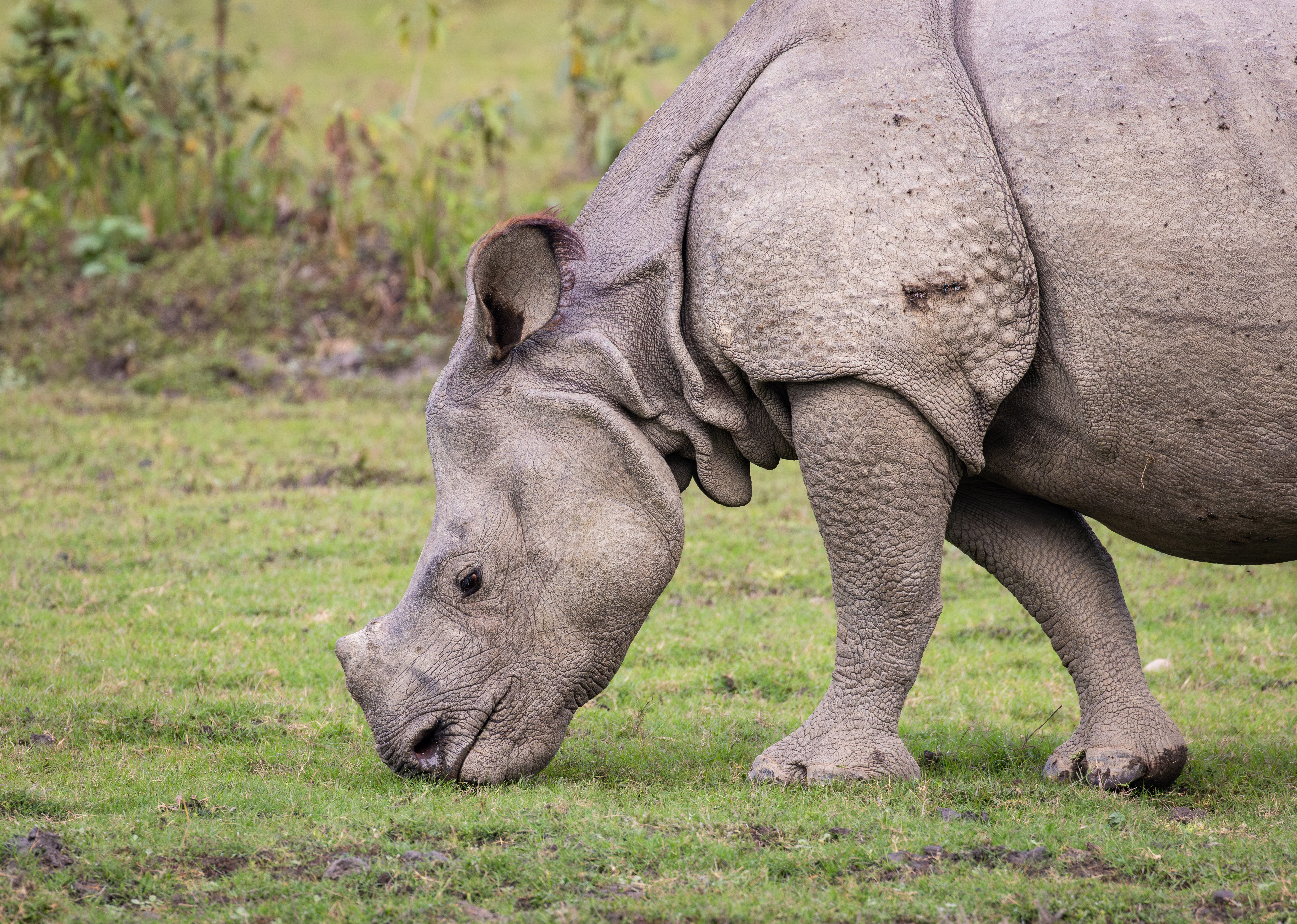
Group Size
A maximum of 10 participants.
What To Expect
A 16-day bird and mammal-focussed tour to several of India’s most iconic reserves including Bharatpur, Ranthambore National Park and Kaziranga National Park.
November is a good month to visit Northern India, when the climate should be reasonably comfortable with likely maximum temperatures of about 30C (86F). The chance of prolonged rainfall at this time of year is low.
Early starts are the norm for birding tours in tropical regions, where the daylight hours are relatively short (approximately 06:30-17.30 in Delhi in early November). Overall, the tour is not an especially strenuous one, but you should be prepared for early starts to enjoy the best of the morning’s birding before the heat and humidity builds and activity starts to wane. After a lull during the hot middle part of the day, the birding tends to pick up again from mid-afternoon, so we are likely to be out until near dusk on a more or less daily basis.
Our guides will be able to advise you locally about the day's events giving you the option to opt out of a particular session or walk if you wish.
Birds
250-300 species
Mammals
20-30 species
Accommodation
Fourteen nights accommodation in India staying at good quality hotels and nature lodges which are located close to the areas we wish to explore.
Meals
All main meals are included in the tour price (with drinking water also provided), commencing with lunch on Day 2 and concluding with dinner at our hotel in Delhi on Day 14.
Breakfast, lunches and dinners will mostly be taken at the hotels. We may occasionally take a packed breakfast with us into the field, and on our transfer days (and occasionally at other times) may enjoy breakfast or lunch in a well-chosen restaurant.
Walking
Easy to moderate walks at a gentle pace although a good percentage of our exploring inside the parks will be done from vehicles or electric rickshaws. Comfortable, lightweight walking shoes or boots with stout soles and good grip are recommended.
Weather
The period from October to May is India’s 'dry season' and the weather is likely to be largely dry with warm to hot daytime temperatures with a daily maxima which are likely to be between 28-30C. It can, however, be significantly cooler in the early morning with lows of around 11C.
Flights
Despite the end of pandemic restrictions, we have taken the decision to continue to price our holidays as excluding international flights.
To keep the process as simple as possible, we are working very closely with a dedicated agent at Travel Counsellors, Sacha Barbato, who is essentially now our “in house” flight consultant.
Sacha will be able to advise you which flights we are recommending for each holiday, and he will be able to book these for you.
This will also sometimes give you the option to travel from a regional airport if you prefer.
Ground Transport
Air-conditioned minibus for longer journeys with private jeeps or similar where relevant, eg inside the national parks.
Our tour also includes a boat trip on the Chambal River.
Photography
Good to excellent opportunities to photograph birds, mammals, butterflies and other wildlife. Many of the places we visit are also highly scenic!
Tour Gallery
View a gallery of images for this tour below, click on an image to view as full size with caption
